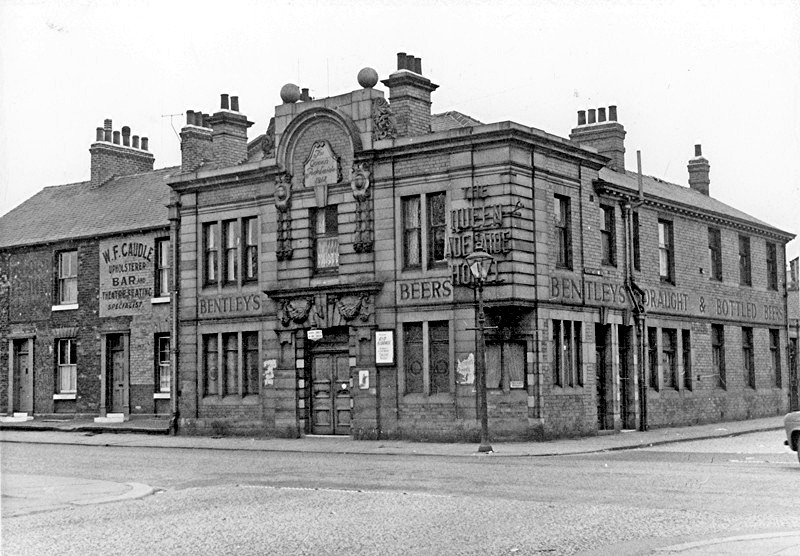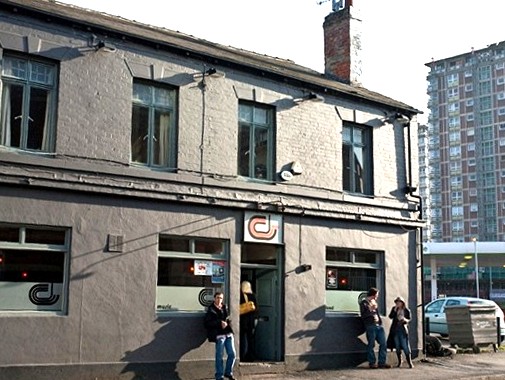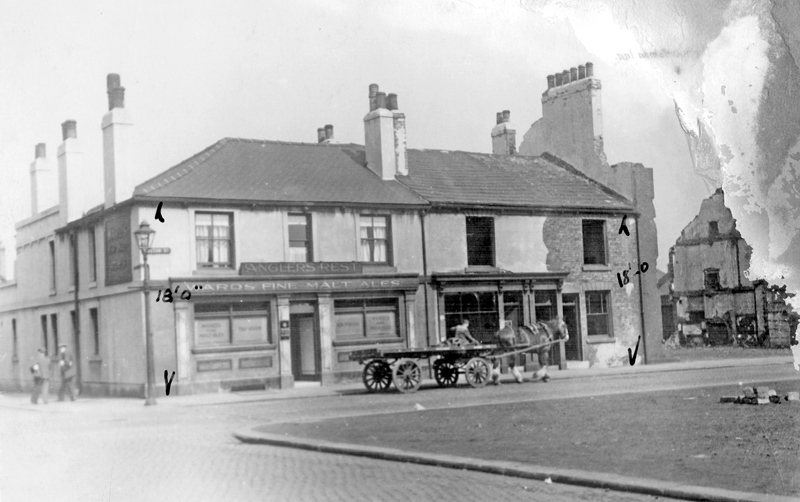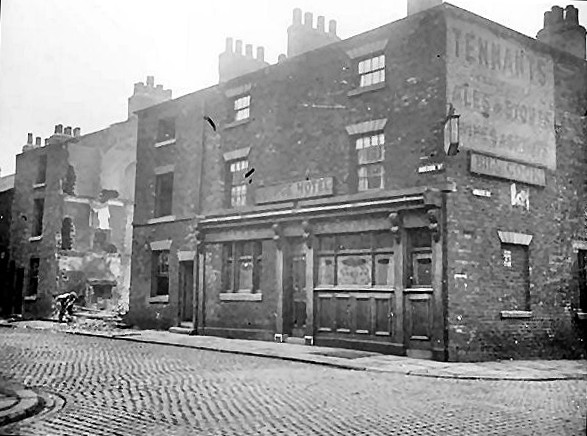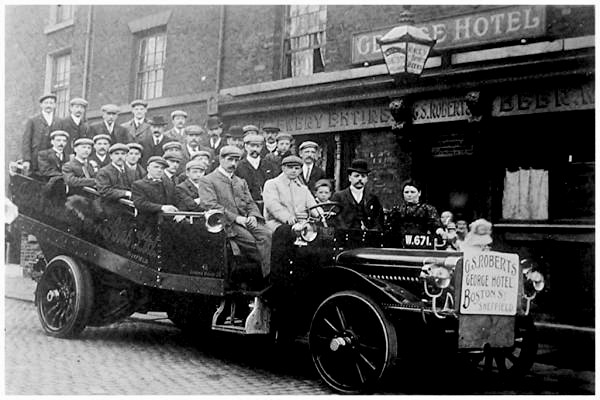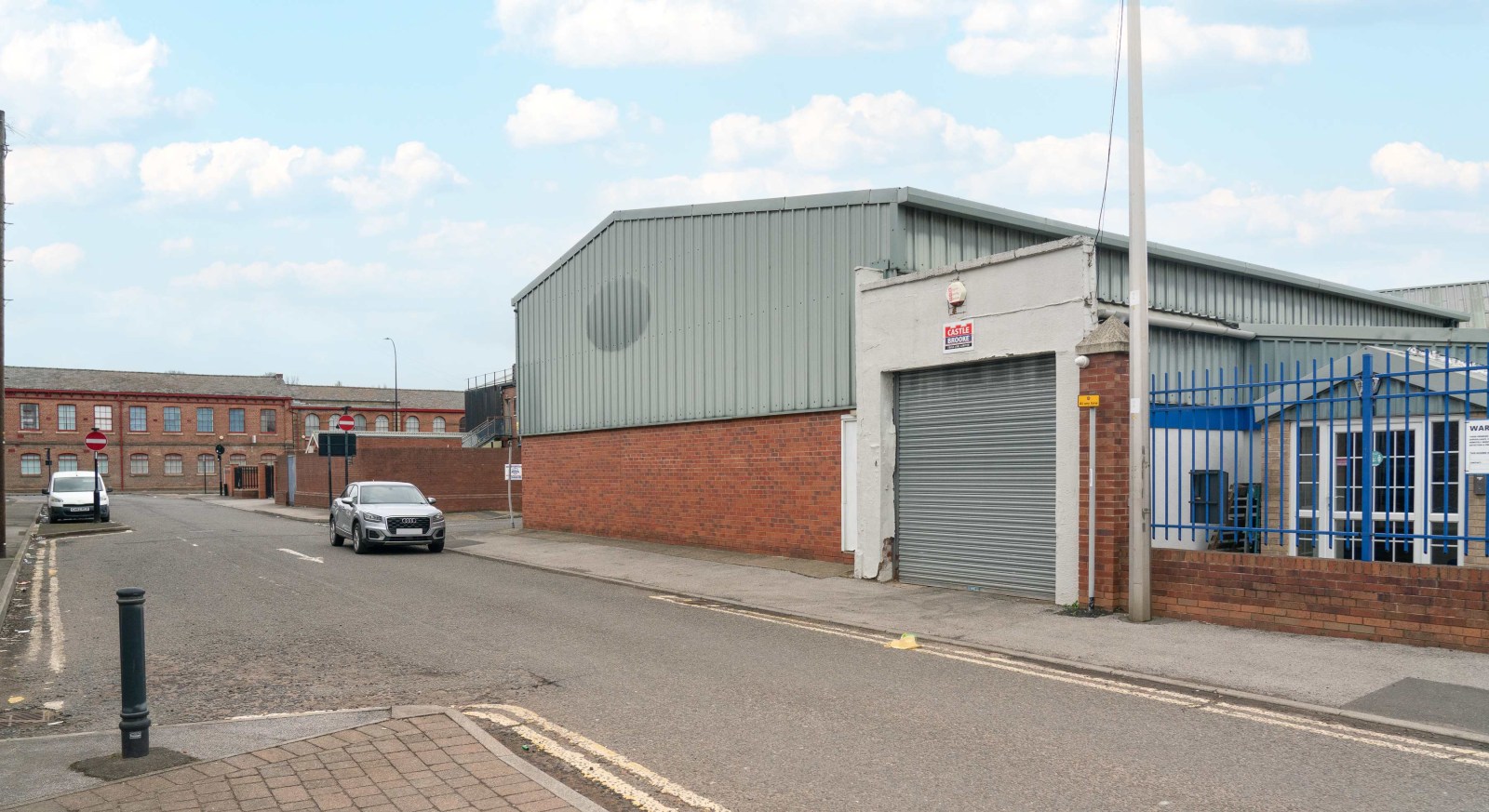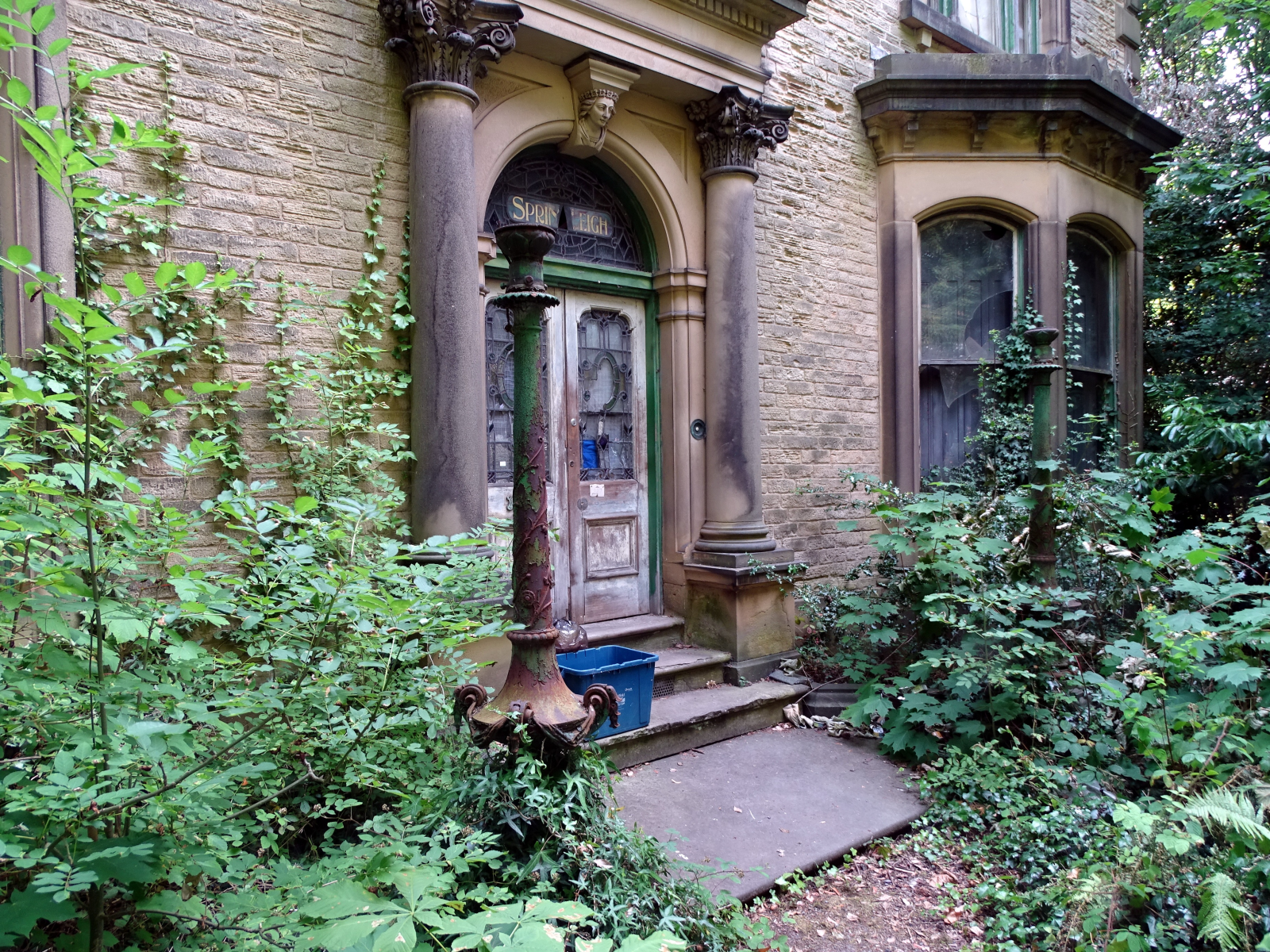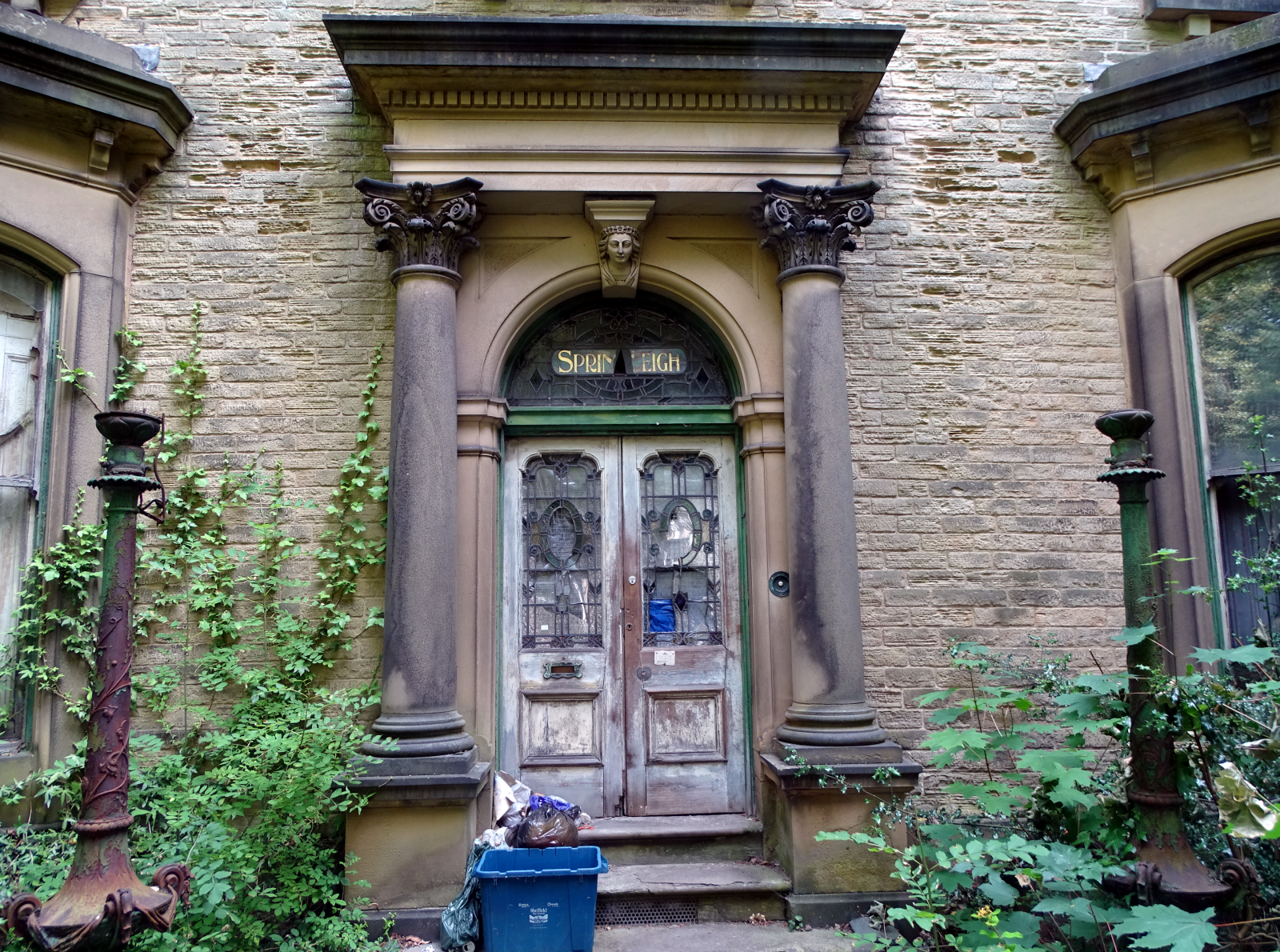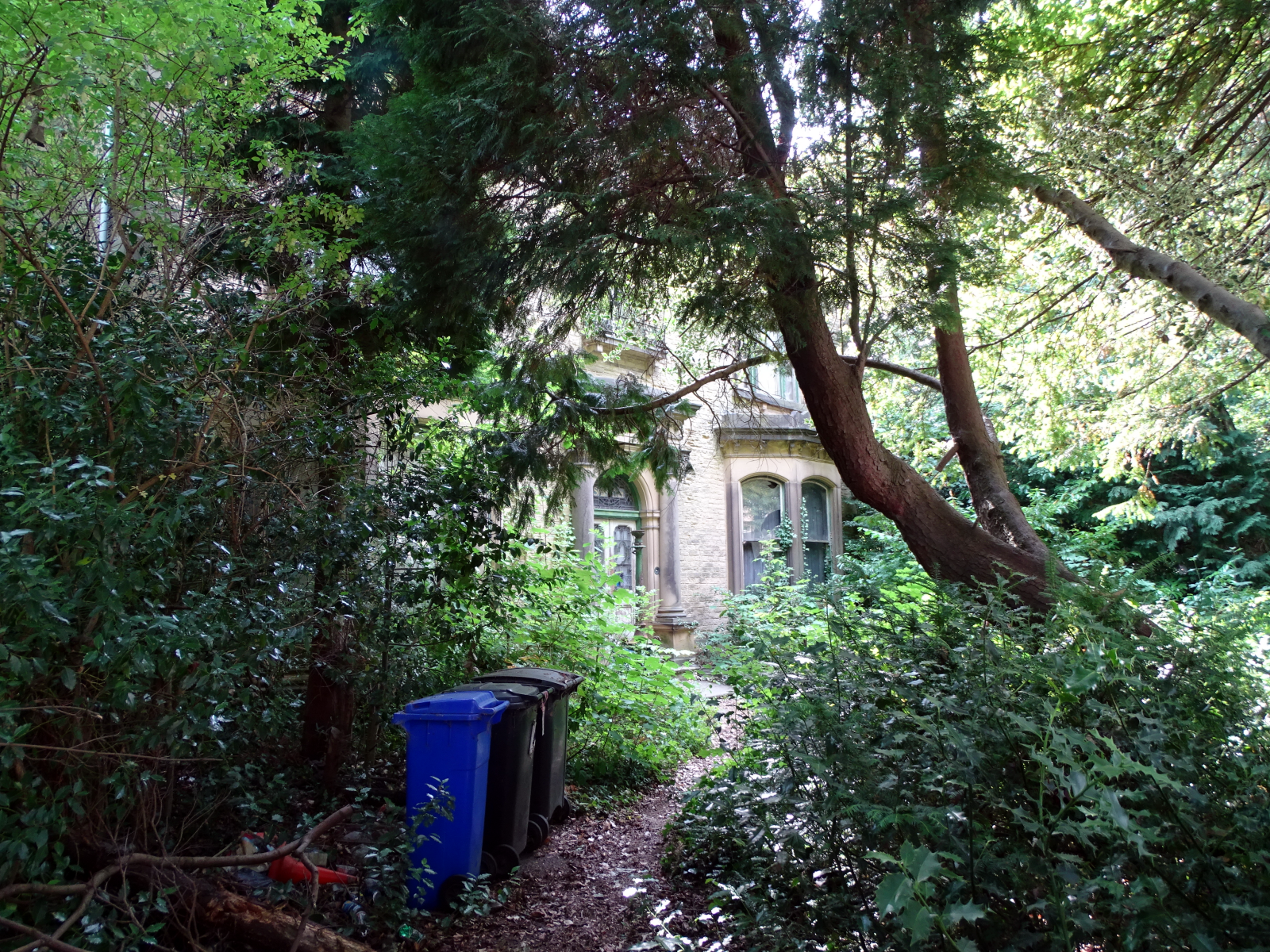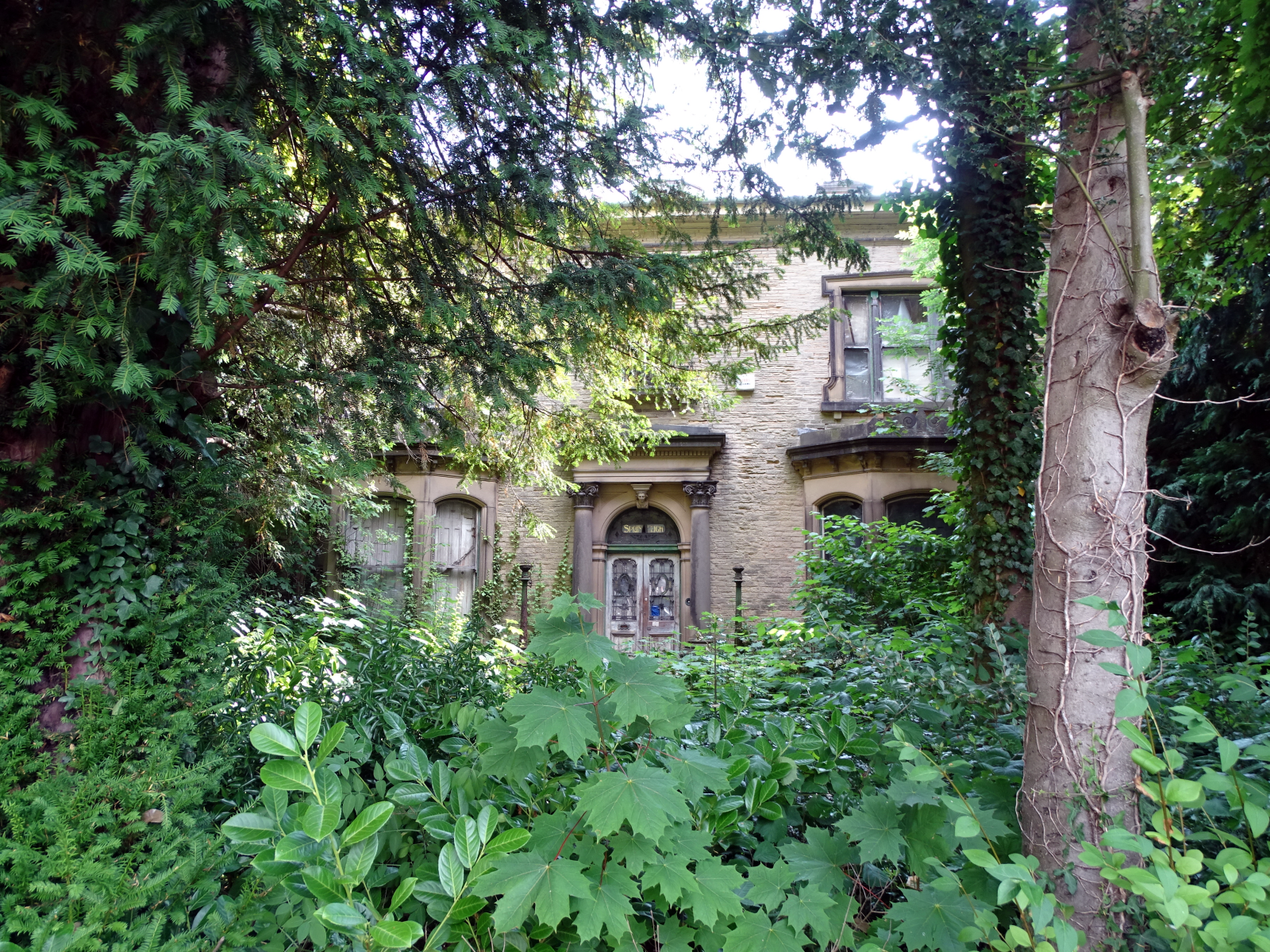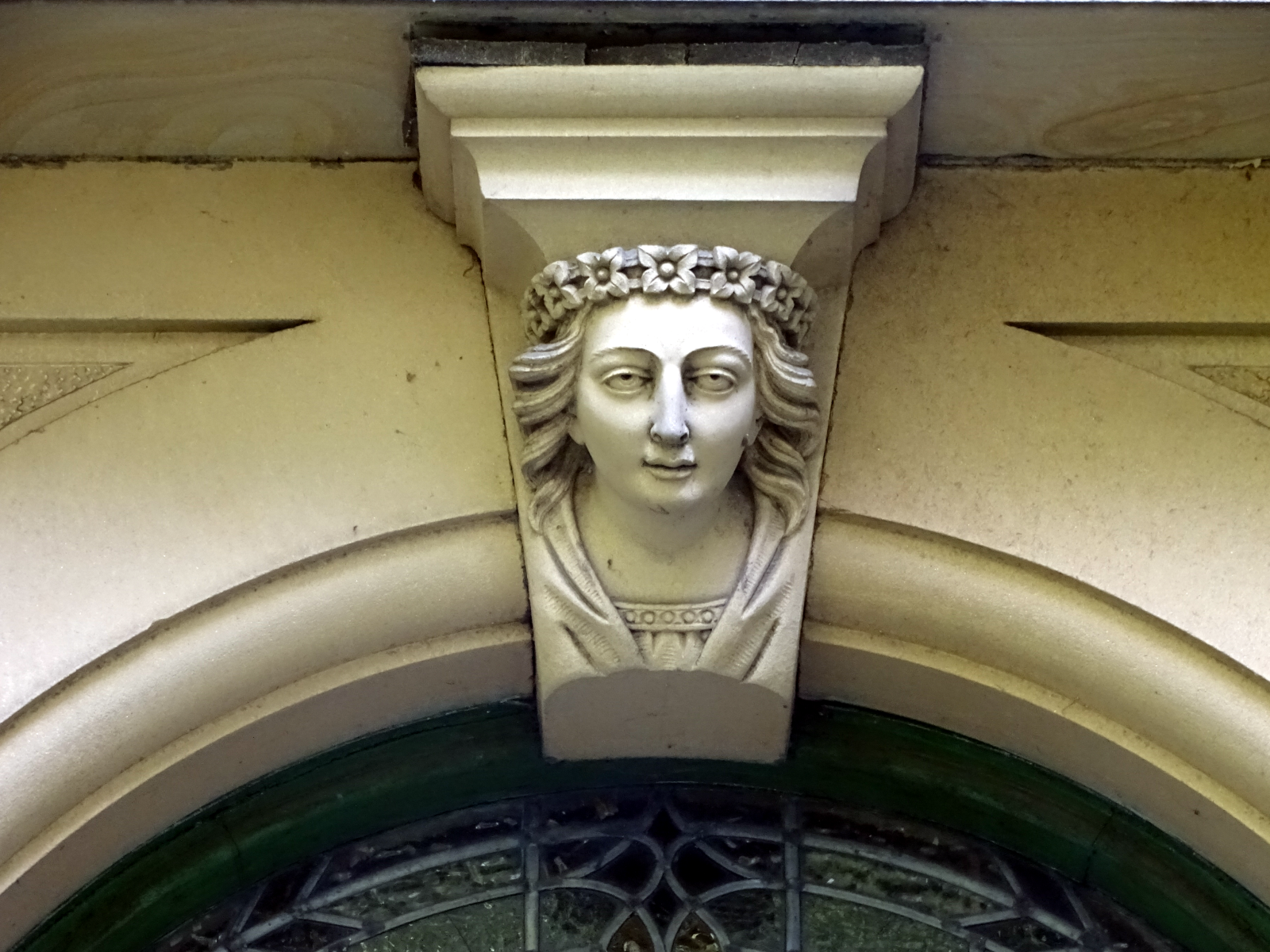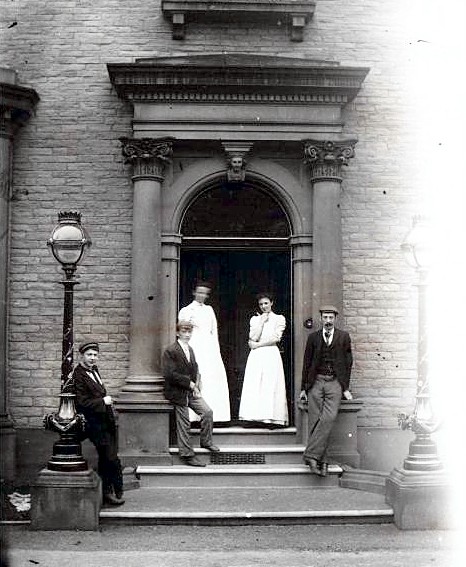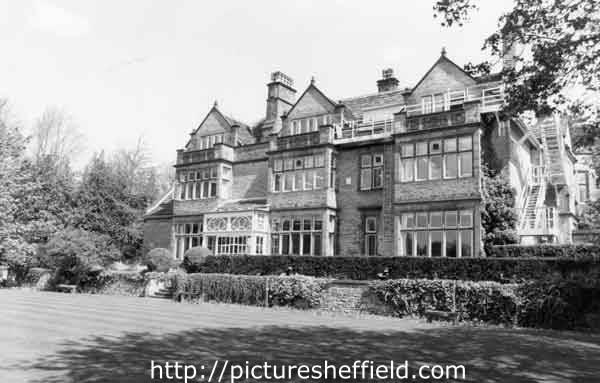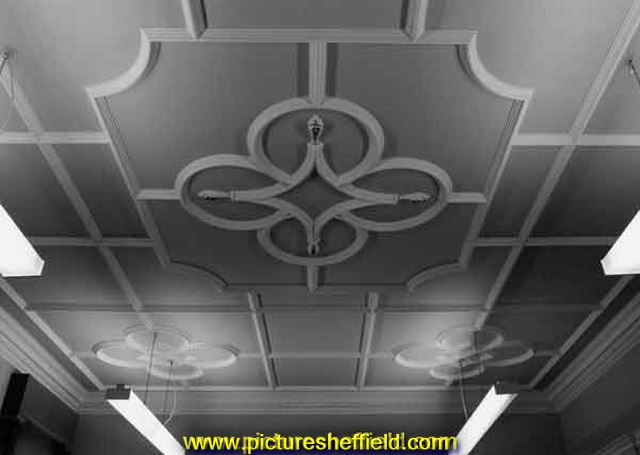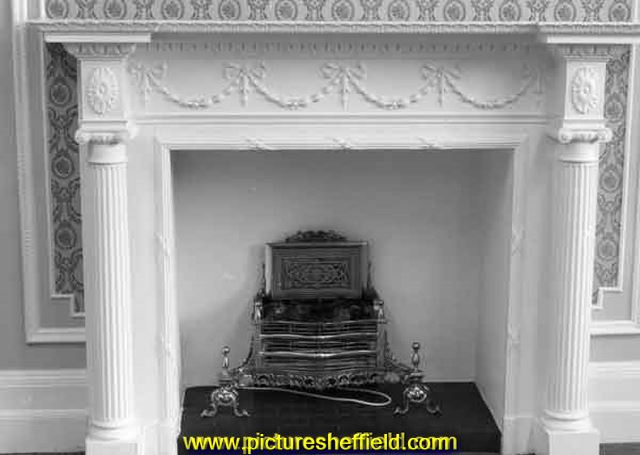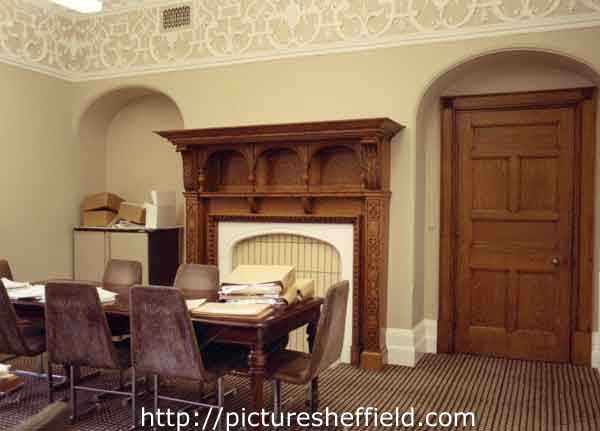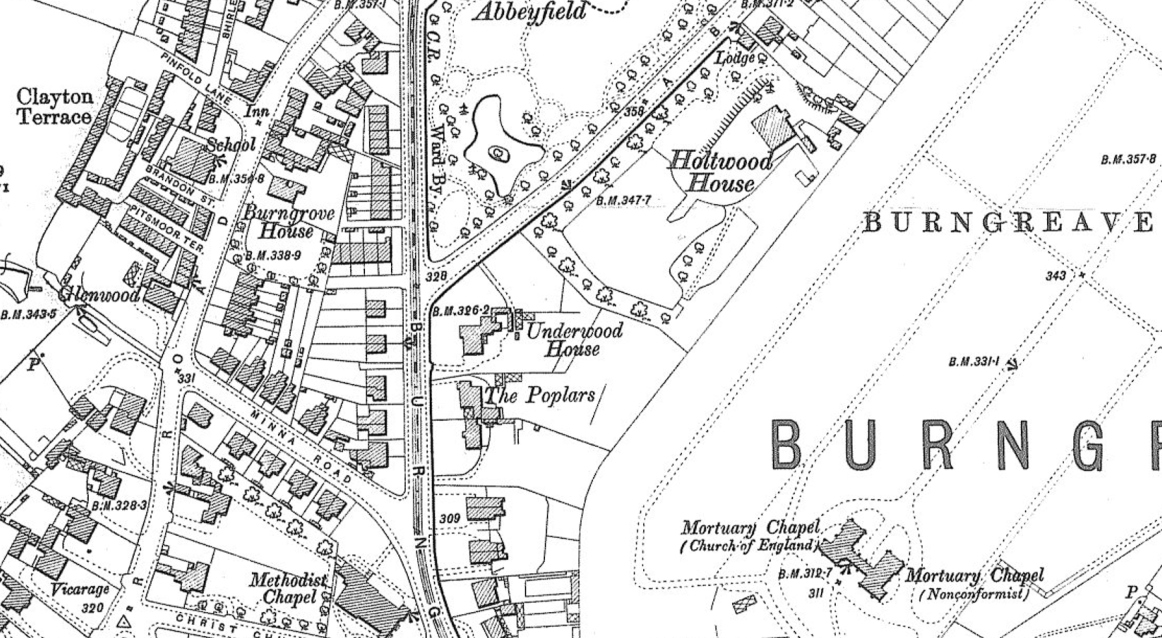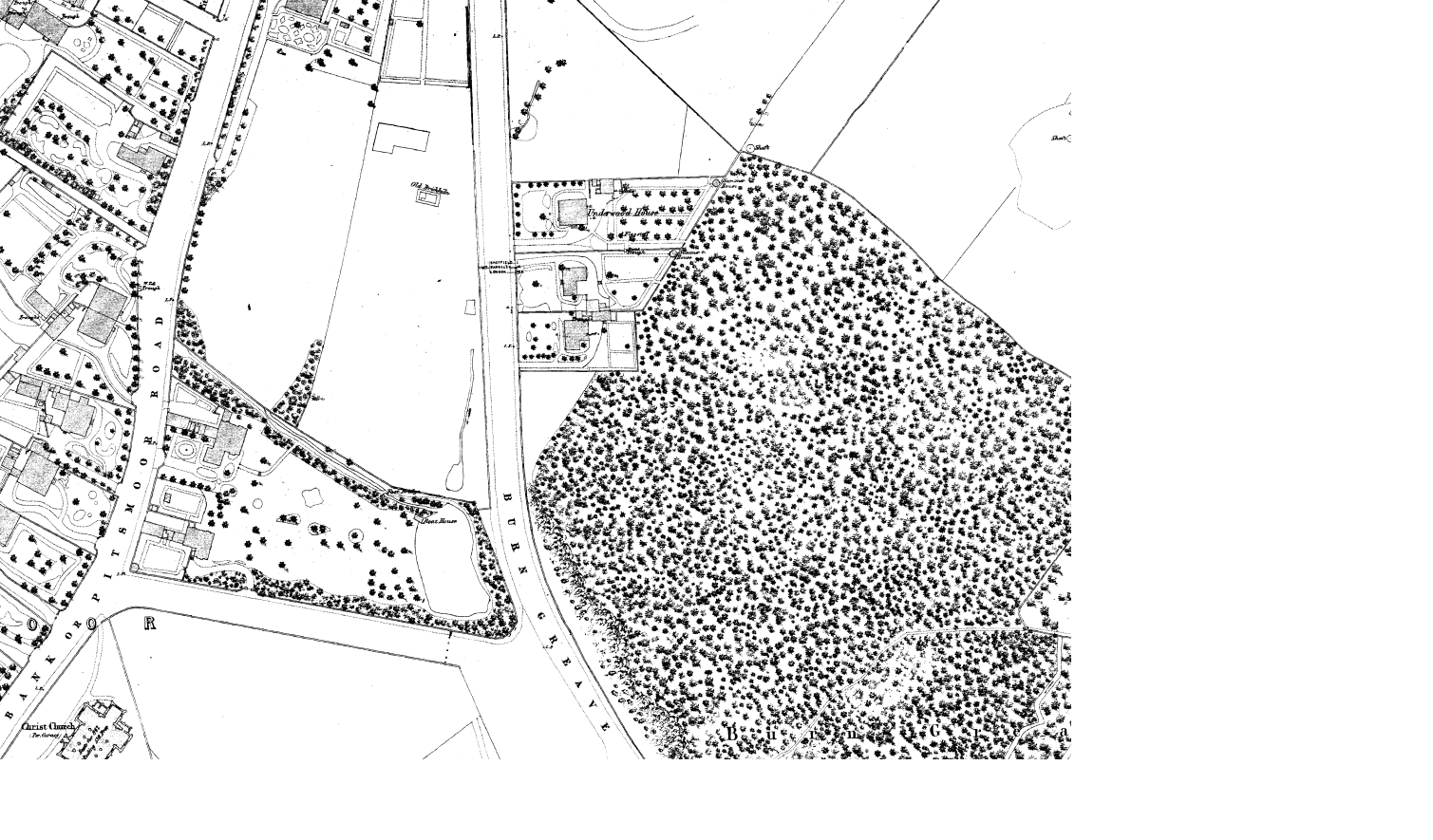Search the Community
Showing results for 'coal pit lane'.
Found 10,020 results
-
In the 1940s and 50s the Tavistock Institute studied productivity in British coal mining. They found the industry in a poor state, but one bright spot was a team of Yorkshire miners working the Haigh Moor Seam. They were multi-skilled, worked autonomously, and had much higher job satisfaction and better labour-management relations than anywhere else. This is the fullest version of the story I've found online - http://moderntimesworkplace.com/archives/ericsess/sessvol2/SESS_Volume_2_Contents_Intro/sess_volume_2_contents_intro.htm. The theory of sociotechnical systems that developed from it also became part of Volvo's Kalmar and Uddevalla plants, which instead of a production line had independent teams assembling whole cars from start to finish - https://www.researchgate.net/publication/227615824_The_Volvo_Uddevalla_Plant. Does anyone know which pit the original research was done at?
-
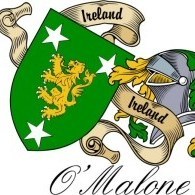
25 Lawson Road Home of John Wingfield Jnr Cutlery Manufacturer
tozzin posted a topic in Sheffield History Chat
25 Lawson Road Home of John Wingfield Jnr Cutlery Manufacturer The highly polished bell push can be seen on the doorway of 25 Lawson Road, in 1879 it was the home of John Wingfield Jnr, he was the grandson of John Wingfield, cutlery manufacturer, one of the partners in the firm listed below, in his book Geoff Tweedale states that this well respected family were originally from Ecclesfield and had connections with Butterthwaite Hall, in the 1787 directory a John Wingfield was residing in Holles-Croft (original spelling not a typo) and he was described as a gentleman, a man of private means, could this Wingfield be the grandfather of the dynasty, John Wingfield Snr was a partner in the firm of Hoult, Rowbotham, Wingfield & Wade, in 1816 the firm was producing high class cutlery in Tenter Street, in 1818 John Hoult left the business, he had been the Master Cutler in 1813, upon his departure the firm was run by John Rowbotham, John Wingfield Snr and Richard Wade, they were famous for their table cutlery and they didn’t have a purpose built factory, they just took a few cottages and turned them into workshops and John Wingfield Snr built a house with a large garden attached to remind him of the countryside around the village of Ecclesfield, the house stood on the corner of what is now Radford Street, now nearly lost to terrible buildings. In 1825 the firm had changed or re-arranged its name to Wade, Wingfield & Rowbotham, John Wingfield of Butterthwaite and John Rowbotham of Portobello were the partners, on the 18th of March 1829 died at Butterthwaite, he was 62 years old and he was buried in Ecclesfield, he joined his son Edward who died age 14 on the 12th of May 1822. His son, John, had joined the firm after he left school , John Jnr, was a natural at business, he was acclaimed as one of the most successful and hardworking travellers in the town, the firm was now making a good return for the partners, by 1841 John Rowbotham was living in Gell Street and had three servants he left this life aged 52 in 1851, by then Wade had retired to the country in Totley, then on to Boston Spa, where he breathed his last on the 20th of March 1867, aged 81, in his will he left £60,000 to be shared among his three daughters. 1851 saw a new partnership with Wingfield & Rowbotham, Henry Colley, in the 1860s Directories both Wingfield`s, father & son were living in Butterthwaite and Colley at Taptonville. The business was that of general merchant and the making and selling of cutlery and edge tools but it also had the wherewithal to produce to produce their own steel, in the 1845 directory, Wade, Wingfield, and Rowbotham, are described as merchants, and table, pen, pocket knife, razor, and file manufacturers, at 82 Tenter Street, saw manufacturing business seems to have been based at 82 Arundel Lane, and steel converters, was on North Church Street, the Tenter Street premises covered a large area, over an acre, but it was housed in early nineteenth century two and three storied buildings, even though they produced world class goods, the shops they were produced in were deplorable, cold in winter, hot in summer, no dust extraction and dangerous machinery, the 1871 census shows us that the entry made by John Wingfield, he states that he had 264 workers, comprising of 202 men, 25 women and 37 boys, the workforce produced goods destined for around the globe, they had a very good market in Australia, where they had an agent in Sydney. In 1871, John Jnr had moved to 22 Collegiate Crescent, he retired shortly after and he died on the 20th of December 1886 at the age of 87, he joined his father in the Ecclesfield cemetery, his loving wife Sarah had died on the 28th of November 1885, he left £53,970 in his will, John Wingfield Junior’s sons, one named after his father and grandfather, John, (he’s the one that lived in No 25 Lawson Road) his brother, William Henry, was living at Alresford House, which is now just plain 2 Sale Hill, his home was just the next road to brother John, in 1885, John Hunt, a relative of Rowbotham along with the two brothers took overall control of the business, by the 1881 census the firm employed 395 workers. By the onset of the 1890s the business was not as successful as it had been, it was stated by the managers of Christopher Johnsons that it was common knowledge in the trade that the Wingfield firm had been losing money over the years and its seems the two brothers had very little left of the fortune their father left them, the losses incurred by the firm was mainly because of trying to undercut competitors and setting low prices for their goods. John died in the last week of October 1898 while he was in Southport, he too was buried on the 1st of September in Ecclesfield, he was 60 years old, The business was sold to Thomas Turner they bought solely for its trade and silver marks, the old production shops were sold, the prospectus that was distributed on the sale of the Tenter Street and White Croft premises, contained warehouses, forging hearths, cutlers shops, engine and boiler house, plus a 12-hole crucible steel furnace, despite the selling off of these premises Thomas Turner continued to list Wingfield, Rowbotham name at their premises at 1 Suffolk Road into the 1920s., they had Turner Lane named after the works The last photo shows the Howard Street, premises include No 36, Wingfield Rowbotham, Cutlery Manufacturer, No 38/40, C. H. Harrington and Co. Ltd., Sheet Metal Workers, No 44, T.H. and N. Perkins, Bakers, No 46, Mary Gentle Cafe -

Hall's tv shop in beighton sheffield in late 1960 early 1970's
Teamheed replied to Youdy's topic in Sheffield History Chat
My dad had garage next to Halls.(Beigton Motors) Mr Hall came to village looking for a room to rent. He asked my grand parents Margaret and Alf Antcliff on Tye Road but they sent him to the colliers. This is why Tom Collier ended up with the shop in the end. Originally he ran a book makers shop in Cornwall. Tom lived in a house at end of what I seem to remember was called Ivy Lane . -

Letter from German WW2 POW Camp Norton Sheffield
LeadFarmer replied to LeadFarmer's topic in Sheffield War Years and The Sheffield Blitz
Thanks for the link. I found the letter for sale on eBay so I purchased it. I live within walking distance of Cinderhill Lane so it caught my interest. -
The Barleycorn Hotel, 38 Cambridge Street (Coalpit Lane), opened 1795 closed 1988. t19201 The name refers to the cereal plant commonly used to make malt liquors and personified by John Barleycorn, referred to by writers Walter Scott, Robbie Burns and Nathaniel Hawthorne. There is an old ballad about him in which he is described as of "noble blood, well beloved in England, a great supporter of the Crown and maintainer of both rich and poor." Info from The definitive A to Z listing of Sheffield Public Houses by Michael Liversidge. https://www.epoch-magazine.com/post/john-barleycorn-must-die Includes link to "John Barleycorn" by Traffic. https://storyarchaeology.com/john-barleycorn/ https://www.learnreligions.com/the-legend-of-john-barleycorn-2562157 https://en.m.wikipedia.org/wiki/John_Barleycorn
-

The Hole In The Road Sheffield
Stasro replied to Sheffield History's topic in Sheffield History Chat
two comments to add to the discussion - 1 This area of the city Centre took quite a pounding during the war with Marples Hotel on Fitzalan Square taking a direct hit and the old C&A building being bombed out. That is why there was a row of single-story shops across the end of what was Change Alley. It took many years' work to put that all to rights. 2. The delays due to the old coal seam were due to the Coal Authority having "first dibs" on any coal found in excavations and they always took their time deciding whether they wanted it or not. -
Two sets of my great-grandparents lived there, according to the census of 1881 and 1891. Sometimes shown as Whitehouses (one word). Different records show alternatively as being on Cherry Street rather than Brammall (or Bramall) Lane. The families concerned were Dickinson and Archer. I'm glad to see the picture of the premises. Such a picture has eluded me until this. Thanks for posting
-
John William Crowther was born in Leeds on 28th August 1858 but lived in Sheffield almost all his life, having arrived in the city in March 1866. He was educated at Pitsmoor, Attercliffe and Zion schools followed by Church Institute evening classes. From 1869 to 1874 he was a choirboy at the Parish church. One night after choir practice, the old verger John Kirk, caught John William playing hide-and-seek in the church, hidden between the effigies on the Shrewsbury monument. The verger was shocked and locked J.W. up in the vestry, then went to fetch the vicar, Dr.Sale. Mr Kirk wanted the Vicar to give the lad a thrashing, but Dr Sale decided otherwise. "The boy's a bad 'un" he said "but they were worse when we were boys." In adult life he was associated with the Tabernacle church and was superintendent of the Sunday School. J.W. also sang comic songs with the Incognito Minstrel Troupe for several years. He initially failed to be elected for the St Philips ward in 1898, but succeeded in 1901. He did good work on various Committees including Health, Electric Light, Tramways, and King Edward VII Hospital for Crippled Children. When the Free Libraries Committee was considering Carnegie's conditional offer of money for library purposes, J.W. stepped in and drew £2,000 for Walkley. He was interested in housing and sanitation and could deliver absorbing lectures on slum life, as well as giving practical help to the children of the Crofts. He was involved in arrangements for feeding poor children, especially during the distress of the 1912 coal strike. His business life was as a pawnbroker and jeweller. J.W. died on Tuesday evening 18th April 1916 at 13 Kenwood Park Road aged 58, following a week long illness (influenza followed by pleurisy and heart complications), and was buried at City Road. A fund was raised for a memorial bronze plaque, which was placed in the boundary wall of Walkley library and unveiled on Thursday 20th October 1927 by the Lord Mayor (Alderman J. G. Graves, who had succeeded Mr Crowther in the Walkley ward in 1916)
-
Reginald Dixon & Walkley This is more of a stepping stone to a much greater history of a Sheffield man who seems to have been forgotten, the plaque in the clue picture can be found on the boundary wall of the Walkley Library and it commemorates Councillor James William Crowther who served Walkley and its voters from November1901 until April1916, the plaque was erected by the citizens of Walkley, it shows the esteem that he was held, the Library is going through a very hard time at the moment and its nothing of its own doing, lets hope it survives the storm. Even though Councillor Crowther deserves more I have to write the rest of this article on a man that gave the people of Britain such pleasure for over forty years at the Blackpool Tower Ballroom, affectionally called “Mr Blackpool” we all know him as Sheffield lad Reginald Dixon. Reg was born at No 36 Bowness Road, Sheffield on 16 October 1904. By the age of two, Reg started to play the organ and piano. Seeing the keen spirit and potential that he possessed for music made his father realise that his son was worthy of tuition. In addition to Dixon's tuition he also practised two hours a day on piano. By the age of twelve, he was already performing in concerts at local music festivals, and by the age of thirteen, he began taking lessons in organ at his local church. At the age of thirteen, he had to give up his schooling in order to continue his music studies. He was now practising at least 8 hours per day or more. He also had applied for the post of organist at Birley Carr Methodist church and was chosen from several applicants, and was also assistant organist at Hillsborough Methodist church. Reg auditioned at the Stocksbridge Palace, near Sheffield, the piece he played was Debussy's “Arabesque” and he was employed as pianist and musical director, for the sum of £3 per week. Reginald gained a lot of experience in this job, and greatly enlarged his repertoire and developed his technique further. After eighteen months, Dixon accepted a job as pianist and deputy organist at Chesterfield Picture House, where his wage was £5 a week. To supplement this wage, he was also giving lessons, when he was 21, he became a fully professional theatre organist. A year later he became organist and pianist of the Heeley Palace in Sheffield, and was still teaching. For practice he was also playing at the Regent Cinema on a 2/8 Wurlitzer, which he became fond of. He was employed as orchestral organist at the West End cinema in Birmingham, from where he changed over to become organist at the Regent Cinema, in Dudley. Here he played a 2/6 Wurlitzer, and it was while he was here that Dixon was giving lessons to Harry Farmer. In March 1930, Dixon was invited to audition for the position of organist at Blackpool's Tower Ballroom, which, at the time, contained a 2/10 Wurlitzer. After auditioning, Dixon was given a trial, with the ultimatum that, if he did not make a success of playing the Wurlitzer for dancing, both he and the Wurlitzer would go. Once he had mastered playing in strict tempo, Dixon further developed his playing style, with a strong bass line, and both hands providing accompaniment and melody. Dixon was mainly left handed and he often played the accompaniment rhythm with his left hand as well as the melody using second touch. This left his right hand free to supplement the music. This became Dixon's trade mark instantly recognisable style. Soon enough, Dixon had fully exploited the 2/10 Wurlitzer's capabilities. Since this was holding him back, and the dancers, this made Dixon plan a larger, more suitable instrument. Within weeks of his appointment at the Tower, the BBC were broadcasting Mr R. H Dixon from the Tower Ballroom, Blackpool. This broadcast was different from any previous organ broadcast, and with Dixon's unique style, nothing like it had been heard before. Dixon was also playing alongside Bertini in concerts, dance sessions, radio broadcasts and recordings. By 1931, Dixon's broadcasts were becoming highly popular, and the time slot was expanded from 30 minutes, to 45 minutes, and were made as often as 5 times a week to the UK alone. Regular broadcasts were also being made to the British Empire, and Dixon was often in the ballroom in the very early hours of the morning, broadcasting live to places such as Canada, India, Africa and Australia. During the winter months, Dixon toured the UK, visiting cinemas and concert halls all over the country. These venues soon filled to capacity, like the Tower Ballroom was daily filled to its capacity of 7,000 people. In 1933 the Daily Mail stated that Dixon was the “most popular of all cinema organists”. Reg could do no wrong, he was the best organist the had ever lived, Reg was awarded an MBE for his services in entertaining the public and radio listeners the world over. At the ceremony in Buckingham Palace, while pinning on his medal, Her Majesty Queen Elizabeth II said to him “I have often listened to you, you must have been there (at the tower ballroom) for a long time now” Dixon replied “Yes ma'am. I have been there since March 1930, but it does not seem as long as that”. When I mentioned to my two defective friends Mr D & Mr S that I was going to write about Organs, they rolled their eyes and started to snigger like schoolboys, dirty boys. Reginald Dixon died on 9 May 1985, and was cremated at Carleton Crematorium, Blackpool. He now plays the mighty Wurlitzer welcoming the new entrants through the Pearly Gates, a Sheffield lad through and through, we should be very proud of him. First picture shows the house where he was born at 36 Bowness Road, the second house, 133 Walkley Lane, he lived here before moving to Blackpool,
-
Challenge Works 94 Arundel Street As you can see we are still on Arundel Street and will be close by next week, right the Challenge Works on Arundel Street, its finely carved name is as crisp today as it was when the works was built in 1888 for Louis Henry Osbaldiston, Louis had the works built as an edge tool manufactory with workshops, office and warehouse, on three floors with a cellar, it appears to have rapidly evolved into a multi-occupancy site, with an electro-plating company sharing the site in 1888. The Goad Fire Insurance plan of 1896 identifies various trades being carried out on site, and the presence of tool forges set behind the street frontage range, itself identified as office and warehouse. The firm was started in 1863 at No 1, Glasgow Place, Moorhead, just thirteen years later he moved to bigger premises on Eldon Street by 1888 he’d moved to the Challenge Works as said above, by the 1880s he had diversified into making pen knives, pocket knives and table knives. The works has a very ornate frontage for just a firm that made among things, saws, files, edge tools, hammers & steel & stay busks, for the education of Mr Dawson & Mr Sorsby, stay busks were a length of plain or decorated wood, that was twelve inches long and two inches wide which was generally tapered at the end, the steel ones were more or less the same but usually had no decoration, they were inserted down the front of women’s stays to keep the wearer upright and they stopped the stays from moving sideways. Louis must have made a very good amount of money from his business because he had Grange Court on Ashland Road built just a few years after having the works built. On nearby Mary Street a certain Mary Osbaldiston had a shop, was she some relation as the name is quite unusual in Sheffield. After the death of Louis in 1901 on the 11th of November at the age of 65, of a heart attack on a train to Grantham in Lincolnshire, while on a business trip. He was buried in Ecclesall All Saints Churchyard along side his sister? Kate Eleanor aged 26 and his Mother Jane aged 83. I cant say for sure as to why the firm upped sticks from the works and moved to the Bath Works on bath Street in the early 1900s, I suppose he was the driving force of the business doing all the travelling to get orders for his company but the firm continued to operate from the Bath Works into the 1940s, then it ceased to be. On moving out of the works in 1910 it was used by a varied selection of craftsmen in the Cutlery and Silver-smithing trades, from this old building fantastic pieces of Cutlery and Silverware were made by just a few of the many craftsmen in the Town, the little mesters came and went and by 1963 another well known maker of Nickel & Sterling Silver Handles & Caps & Ferrules moved in, this was William Yates, again Yates was a Sheffield success story. The origins of this firm can be traced back to 1750 when Mr James Eggington founded a Ferrule making business in Sheffield, in 1786 James had son named after him, James, in 1833, James the son had opened a shop (in the cutlery trade a shop is a small workshop) at No 35 Meadow Street as a Brass Turner, in 1841 along with his brother William (some sources give Henry as his partner) they open a shop at No34 Hollis Croft as Brass Turners, Inkstand & Silver Cap & Ferrule makers. In 1843 the name Yates appears in their history when William Yates wife Amelia nee Eggington has a son, William, by 1868 young William was in partnership with his cousin John Eggington and were operating from No 75, Broad Lane. I don’t know what prompted the next move but just eight short years later William bought a property a7 No’s 217-219 Rockingham Street, Eggington`s are still manufacturing today they did specialise in Steels up to the sixties but now they produce pen & pocket knives along with Cutlery in there factory on Allen Street. In 1876 William Yates registered his “H.Y.” Hallmark at Sheffield Assay Office. In 1899, Williams Wife gave birth to Harold the eleventh of twelve children, in 1913 William Yates died aged seventy and just one year before in 1912 Harold joined the firm at the age of twenty three. By 1919 Harold too became a father to William Rodney, and just thirty years later he joined the company as to why his late induction into the firm I cant say, perhaps he was getting a good education. In 1950 William Rodney became a father to Graham William, in 1961 Harold, the Grandfather died aged seventy two years, as I mentioned earlier Yates moved to the Challenge Works in 1963, in 1970 Graham William joins the firm at the age of twenty and by 1996 William Rodney retired at the age of seventy seven, now that’s dedication!. In 2,000 Yates celebrated 250 years of a family’s continuous ownership and production. Sadly the production ceased at the Challenge Works and is now accommodation for who ever can afford the rent for the apartments that the works has been turned into, the buildings saved which is good but it’s a pity the magnificent wooden gates that covered the works entrance have been replaced with a terrible glass entrance. William Yates is now part of Chimo Holdings, another firm that produces high quality items at White Rose Works, 61 Eyre Lane, Sheffield, I once worked in this building when it was Gee & Holmes. My thanks to Geoffrey Tweedale and his excellent book for giving me a start on this W.T.E.T.
-
Plan of Broombank House and other freehold property situate in Clarkehouse Lane belonging to the late Francis Newton, Esquire, to be sold by auction. Dated. 13th June 1865. https://www.picturesheffield.com/frontend.php?keywords=Ref_No_increment;EQUALS;y10826&pos=1&action=zoom&id=73501 Prospectus for Broom Bank House School. https://discovery.nationalarchives.gov.uk/details/r/196e208c-7b72-46eb-a3e4-17cbabe127d4 Francis Newton & Sons Ltd. https://hawleysheffieldknives.com/n-fulldetails.php?val=n&kel=1019 Wetherspoon Pub Histories. The Francis Newton. https://www.jdwetherspoon.com/pub-histories/england/south-yorkshire/the-francis-newton-sheffield Open Plaques, The Francis Newton. https://openplaques.org/plaques/10155
-
Francis Newton & Broom Bank House The decorative cornice in the clue picture can be found on what is now the Francis Newton, a Wetherspoon`s public house on Clarkehouse Road, originally it was named Broom Bank House and was built by local lad made good, Francis Newton, Francis was the son of Thomas Newton a Grocer Campo Lane, he still had his grocery business when Francis was born in 1796, his father may have provided the capital to start his business. By 1822, he was in partnership with John Greaves who became Master Cutler, 1837, the partnership was called Greaves & Newton, merchant and manufacturers of table cutlery, pen and pocket knives, razors, and brass founders. The enterprise was based in West Street, but by 1834 was trading in Portobello Street. One of the partners, Henry Greaves, died on 13 February 1835. John Greaves died on 30 June 1849, in Ramsey on the Isle of Man. Prior to his partners death, Francis was trading under his own name after about 1837, manufacturing table cutlery, pen and pocket knives, razors and various tools. By the start of the 1850s, Francis had brought his sons, Thomas Newton, 1825-1892, Francis Newton Jun.1828-1904, and James Greaves Newton 1831-1878, into the enterprise. As 1854 dawned Francis retired , on the 21st of July 1864 Francis died at the age of 68, he was buried in Ecclesall All Saints Churchyard, he left £30,000 and the business passed to his sons, Francis and Thomas, the other brother James had left the company in 1858 Another name linked to the company was also a partner, he was Hamer Chalmer, he was a director from 1867 to 1905, he was the son of the vicar of Fulwood, Hamer had been apprenticed to Newton’s, progressed to traveller and ultimately chief partner, he died on the 3rd of March 1913 aged 74. Newton’s manager was Mr John Scholefield and when he died on the 21st of September 1891, aged 82 he was known as the oldest cutlery manager in town, he was laid to rest in Norton cemetery. By 1871 the firm employed 45 workers by 1883 the workforce had risen to 70 men and 30 lads, in 1884, Newton's took over the assets of the bankrupt steel, tool, and cutlery business of Joseph & Robert Dodge. The firm's products were impressed with the corporate marks, "Premier", the figure of a swan with the word "Try", and Juste Judicato, the latter was Dodge's old mark. An article in the Sheffield And Rotherham Up-To-Date 1897, stated “The Portobello Works is occupied as general and private offices, warehouses, and packing and dispatch departments, at the rear of the works held grinding shops, forges, the motive force was by steam power and four hundred workers are employed there” the workforce seems to have had a big jump from one hundred to four. A silver mark was registered in Sheffield in 1906, when the company adopted limited liability. Newton's sold to the home market and the Continent, particularly to Dutch and German customers. In the 20th century, Newton's marks were bought by George Butler. The Newton name survived and was still listed in directories at the end of the 1980s. Due to his profitable business he was able to build Broombank House, as a residential dwelling for his wife and family, this building, was built in the Georgian style, it was within easy walking or riding distance of his Portobello Works. In 1844 Francis was elected Master Cutler, the head of the prestigious Company of Cutlers. At that point, the region manufactured 90% of British steel, and nearly half the entire European output. To the rear of the buildings beyond a large lawn were private gardens complete with a little pond. Lynwood Gardens is an 11 acre area of mature woodland and open glades. The site is a rare example of the surviving house and garden of a wealthy Victorian, in the 1820s . At that point, the region manufactured 90% of British steel, and nearly half the entire European output. To the rear of the buildings beyond a large lawn were private gardens complete with a little pond. Lynwood Gardens is an 11 acre area of mature woodland and open glades. The site is a rare example of the surviving house and garden of a wealthy Victorian manufacturer. After it was built it was left virtually untouched for over 150 years; map evidence suggests that it may be the only piece of virgin land left in western Sheffield. The Friends of Lynwood Gardens took over the site in 2003. By 1911 the site was King Edward VII Boarding House for Juniors. Frederick Thomas Saville, Master. After 1918, about thirty boys who came from outside Sheffield were boarders. The house was then owned by one of the teachers. It was subsequently acquired by Sheffield City Council Education Department. The building opened as a Wetherspoon in February 2010, after a £750,000 makeover, having previously been the Aunt Sally, a Tom Cobleigh pub from 1994 to 2009. Tom Cobleigh, took on a derelict building and spent some £1.5 million on restoration. Work included the foundations and cellar; these had been reinforced with steel beams and doors to provide a blast proof headquarters for WWII ARP wardens. Inside, some decorative arches were condemned as beyond restoration. However, identical replicas were used in their place. There is also a large amount of wooden panelling, some of which may be original. In addition, a large conservatory was built as an extension. The photo of Sidney Street & Sylvester Lane shows the Portobello Works on the extreme right, this may well be Francis Newtons works, As always my thanks to Geoff Tweedale’s book on Sheffield Cutlery Manufacturers without which this article would not have been possible.
-
Kersal Mount and Beyond Today’s subject takes us to an area of Sheffield that housed the wealthy of the town and my subject today is no exception, it was the former home of Joseph Burdekin Jackson of the tool firm of Spear and Jackson, today the house is now a care home called the Laurels and Limes, it has a fantastic prospect and it just has to be a joy to live there, when I called I was impressed by the helpful staff. The clue picture shows two Cupids either side of a Hawks nest and the one on the right is stealing an egg from the nest which is above the main entrance, it’s a fantastic piece of carving but I cant find out who carved it, along the eaves are several Mythical beasts including what looks like a Fox that’s been scared out of its wits. It was built in 1869 and was originally called Castle Mount it was designed by Hill & Swann for Joseph Burdekin Jackson of Sheffield Saw & Tool makers Spear & Jackson, in 1862 he's listed in Whites Directory of Sheffield as living at Wood Bank Burngreave, an area that was much desired by the wealthy, its sad that this area now has such a bad reputation. William Hill along with his partner Salmon L Swann designed some spectacular buildings including Bolton Town Hall, Portsmouth Guildhall and Yeadon Town Hall, so Hill & Swann had a good pedigree in design. Just one word sums up Sheffield this word is steel. The town was known for the production of knives in the 14th century, and by 1600 had become the main centre for cutlery manufacture in England. In the 1740s, a form of the crucible steel process was discovered that allowed the manufacture of better quality steel than had previously been available, and this innovation spurred the growth of Sheffield as an industrial town. And it was not long after in 1760 when the foundations of the one of the city's best known firms, and one synonymous with steel; Spear & Jackson, were laid. 1760 was the year that a draper named John Love and a Wakefield merchant, Alexander Spear, decided that steel offered a better living than cloth and went into business together. By 1814, the business had passed down to Alexander's nephew John, who took on an apprentice Sam Jackson to learn “ye art, trade or mistery of saw-making“. Sam's first job was carrying blades from the forge to the grinding wheels yet, by 1830, he had obviously proved his worth as a new partnership was formed, Spear & Jackson. In 1787 Love & Spear were listed as Factors and Steel Refiners on New Street, New Street was given a name change in 1886 its new name was Stepney Street in the Park District of the Town, this street is still in existence but its now just roughly thirty yards long. Even though I’ve cited from the internet that Spear & Jackson formed a partnership in 1830 but I’ve found in Whites 1825 Directory that the partnership was in existence five years earlier in 1825 making saws and files on Gibraltar Street, at that time John Spear was enjoying his life at his home on Western Bank, by 1849 they were listed as 1849 Spear and Jackson, merchants, and steel, file, saw, ledger blade, machine knife manufacturers, Saville Works, Saville street East, by this time John Spear had moved house to Malin Bridge, while Samuel Jackson, was living in Attercliffe. John Spear died on the 11th of June 1851, leaving Samuel to run the company. By 1852 their Etna Works on Saville Street East was a MASSIVE site, the firm were also making Smoke Consuming Apparatus along with saws & tools, on November 28th Samuel died leaving his son Joseph to run the company along with other family members, in 1879 Joseph was made Master Cutler and by 1889 he was made the Mayor of the Town, Joseph Burdekin Jackson died on the 26th of July 1895 and was laid to rest in Fulwood Churchyard on the 30th of July, he was sixty years old. After his death it seems his widow thought the house to big as by 1899 a Mrs Florence Burrows is living at Castle Mount, it could be her husband John Henry Burrows renamed it Kersal Mount, her husbands brother Samuel Henry Burrows started out as a Horn Merchant and Dealer along with John, in 1846 their address was Shepherd Street by 1852 Samuel had invested in property and his business expanded, in 1876 they had started cutting, stag horn, buck horn, Ivory, nacre, hard wood for the cutlery industry, his increase in income showed as between 1852 to 1876 he had houses at Stanton Broom, Mackenzie Crescent, Broomhall, Fulwood Road, Western Bank and Ecclesall, he also owned a Warehouse and Shops on Campo Lane. Samuel also went into Iron & Steel manufacturing, his works was situated at the South Yorkshire Iron Works, Pothouse Lane, Attercliffe, his son John Henry Burrows had been running the business since his fathers death, but soon after moving into Kersal Mount he passed away on the 23rd of April 1899, Florence continued to lived there till her death sometime in the 1920s. Spear & Jackson’s tools are still highly regarded throughout the world and their Trowels are much loved by Archaeologists because of their strength and flexibility, the range of their products was unbelievable, sadly most of the tools we buy are now made abroad and are inferior to Spear & Jackson’s.
-

Can you name this Sheffield pub?
Lysanderix replied to Sheffield History's topic in Sheffield History Chat
The low Shiregreen estate was built by the Council on land with a covenant forbidding the building of pubs…which is why those few that were built were on the outer edges of the estate. A local man..Sicey Smith …gave his name to the road on which the Sicey was built The first photo shows ,to the right ,the rear of a small group of cottages on Hatfield House Lane…I seem to remember that they were bulldozed down in the late 1960s. The second photo does show what looks like the construction of a new doorway…..and the cars and lorries would seem to confirm the date of 1981….but Is that a “For Sale” sign to the right of the rundown looking pub.? -
The Ivies, Crabtree Drive. Home of Professor Alan Usher OBE, a leading forensic pathologist at the University of Sheffield who died 31st July 1998. Prof. Alan Usher (1930-1998) https://www.picturesheffield.com/frontend.php?keywords=Ref_No_increment;EQUALS;s38159&pos=6&action=zoom&id=75043 s38114 Rear of The Ivies. s38112 s38113 The 1676 date stone on the gable end isn't the only one. 1841 is marked above the porch with the initials "J F" Joseph Frith, explorer, traveller, later eccentric and recluse died 1886. Also datestone "M 1948" Dr. McKenzie of Firth Park. More information, Burngreave Messenger December 2003. https://www.burngreavemessenger.org.uk/37dec03/crabtree.shtml According to Whites Directory 1879, it appears The Ivies was divided into two properties Nos. 67 & 69 Crabtree Lane. Firth, Mr. Joseph, The Ivies, 67 Crabtree Lane, Crabtree (Directory names him as Firth not Frith) Smith, Mrs. Mary Elizabeth, The Ivies, 69 Crabtree Lane, Crabtree. In the 1856 Directory he's listed as Mr Joseph Frith, Crabtree. Local Studies, Sheffield Telegraph Obituary Index: Joseph Frith of Pitsmoor, 5th November 1886. Article in the Times 4th June 2004. Headline : Daily Life June 4th 1858 Travelled the world for 3 years, returning to his house in Sheffield he became reclusive and died in 1886 after building a 25ft wall to protect it from new homes near by. https://www.thetimes.co.uk/article/daily-life-june-4-1858-69rkmm7nt5h In his will he left money for poor people in straightened circumstances, The Joseph Frith Charity which later was brought under Hollis Hospital Fund. https://www.hollishospital.org/about/the-joseph-frith-charity/
-
Junction of St. Mary's Road at junction with Bramall Lane, No 1, St. Mary's Road, Norfolk Hotel. April 1956. s19192 Star of Lemont PH, 27 - 29 Hermitage Street. 30th April 1956.s21600 Nos 26-40, Hermitage Street. From left, No 40, St. Mary's School, Caretakers house, No 38, former Greyhound Tavern (with arch leading to Court 😎 and back to back houses (Court 6 at rear) September 1938.u02450 Rising Sun Public House, No. 67 Hermitage Street. September 1939s17133 Royal Oak, Cemetery Road. https://www.picturesheffield.com/frontend.php?keywords=Ref_No_increment;EQUALS;t09520&pos=16&action=zoom&id=89656 London Road (junction with Boston Street) showing the Lansdowne Hotel (Nos 2 and 4 Lansdowne Road) t06108
-
“Dus` Tha` Fancy A Pint Lad” Welcome back to our on-going roam around Sheffield’s old pubs, most have gone but some are hanging on to life. Our area today is what is or was affection ally known as Little Sheffield, I know Mr D & Mr S are scratching their heads and saying “Where’s That Then?” Little Sheffield, a village and close to the main town of Sheffield was redeveloped to cope with the rapidly increasing growth in population. Separated from Sheffield town by the uninhabited, barren, gorse-covered, Sheffield Moor, Industry here was based on water-power provided by Porter Brook with water-wheels at Sharrow Mill (Sharrow Vale Road), Sharrow Forge (Napier Street), and Bennett’s’ Wheel (Vulcan Works). The latter two mill-dams and Broomhall Corn-mill dam off Ecclesall Road were drained and filled-in around 1870 providing land for houses, schools, and new industries. I believe that Little Sheffield ran from around Pomona Street just off Ecclesall Road, over to Cemetery Road up to Sharrow Lane, back to St Mary’s Church on Bramall Lane, then up to Abbeydale Road to near Sharrow Lane again and strangely enough the area below Havelock Square and as far as Eyre Street were also counted as Little Sheffield, it’s the small area within these parameters that our pub tour lies. I must mention that within a very small area there were four breweries, Wards had the Sheaf Brewery on Ecclesall Road, which stood where the Wetherspoons Granary pub now stands, (why that name?) now stands, just a few hundred yards away roughly where Waitrose now stands, here stood the Old Albion Brewery, just behind the Old Albion on Napier Street stood the Dantzig Brewery, just on the corner of Bramall Lane and John Street, where the new Spar shop now stands, here stood the Britannia Brewery and finally just on Cherry Street stood the Hope & Anchor Brewery, in its place stands anchor Point, at the gates was the Hope & Anchor Logo sadly it was removed but they did retain the old colour of the boundary wall of the brewery, to say that the demon drink was made here, its name is misleading as it has religious meaning, it came from the Letter to the Hebrews (6:19): "We have this as a sure and steadfast anchor of the soul, a hope." Our year is 1893 but some of the pubs we set foot in were open long before then, we start off by strapping on our electric time trousers and head for the Norfolk Hotel at No1 St Mary’s Road, which stood just on the corner with Bramall Lane, this was a Gilmour’s house and it was open in 1881 and its first licencee was Joseph Chappellow but at the time of our visit in 1893, his widow, Mary now holds the licence, this corner pub stood just past St Mary’s church, more or less opposite where Hermitage Street met the Lane and it was just a Beer house then seems the name came later its hard to pinpoint exactly where it stood because of MASSIVE road changes and demolition of our old buildings, we leave the Norfolk cross over Bramall Lane to the Queen Adelaide at 32 Bramall Lane even though it stood on the corner with Hermitage Street, this brilliant pub was up and selling beer in 1825, George Beavis was the first landlord, it sold Bentleys Beer, this Brewery was at 29 Castle Folds but was taken over by Stones later, on our visit John Willey Dungworth was the landlord, this pub had a reputation for the entertainment it provided by its customers for the customers, a truly well missed pub, we leave this friendly pub with the sound of After The Ball Is Over ringing in our ears, perfect., Mr D & Mr S really love dancing in the street, tip-toeing through the Horse Apples. We head up Hermitage Street to the Star of Lemont at No 29, this strangely named pub was open in 1825 and its landlord was Isaac Briggs, another Gilmour house, it was classed as a beer house on 1893 and it seems Isaac was still at the helm, there’s not much information about this pub, the meaning of its name still alludes me, the only Lemont I can find is in Illinois in the U.S.A., was the Star an actress, singer, sportsman ? I just don’t know. Leaving the Star our next pub is the Greyhound Tavern at 38 Hermitage Street just opposite Arley Street, this is where the China Town project is now in the course of being constructed, I wonder if Beijing will have a Highfields area, I don’t think so, the Greyhound was serving beer in 1871 by Mr Charles Wright it closed on the 4th April 1913, at the time of our visit Mrs Hannah White holds the licence, it’s a small pub but its cosy and its beer is first class what more do we need, an old lady in the corner called Blackstock Lynn starts to sing The Volunteer Organist, “The elder in his pulpit high, said, as he slowly riz: "Our organist is kep to hum, laid up with roomatiz, An' as we have no substitoot, as brother Moore ain't here. Will some 'un in the congregation be so kind's to volunteer?" every body in the small snug stops talking and listens, it brings tears to the eyes. Pretending to be touched by the song with a moral, we make our way out and head for the Rising Sun at 67 Hermitage Street, this pub looks more like a small factory than a pub but as long as it sells beer it doesn’t really matter, Thomas Jowitt was the first to hold the licence and at the time of our call William Humberstone was running things, you must remember that I like many others look back on our lost pubs with rose tinted glasses, as the outsides were covered in soot and grime just like the houses of the people who lived in this particular small area of Little Sheffield, but that’s how it was, after a swift half we leave Hermitage Street, this once heavily populated street is now just a remnant of what is was, around 75 yards of it can be found at the back of Lidl on St Mary’s Road. We walk to the corner of Hermitage Street with London Road and go into the Hermitage Inn at 11 London Road this old pub was selling beer in 1822, by 1825 it was the Old hermitage, but it was renamed to the Hermitage Inn by 1893, the first licence was William Palmer, in 1893 Edwin Ellin held the licence, it was hit by bombs in 1940 which put paid to its service to its customers, a new pub was eventually built and its still open. We now skip and dance between the Trams and Horse traffic on London Road to make our way to the Royal Oak at 17 Cemetery Road, opened in1863 its first man in charge was James Rudd but our landlord today is Mark Chambers, this is a great little pub but eventually some irk decided to call it the Beer Engine, and tried to attract the beautiful people, well my two mates and I were never attracted! Its still open. Leaving the Oak we turn to our left and walk the few yards to the Lansdowne at 2 Lansdowne Road, this was opened in 1854 by landlord William Walker, at our visit it was William John Allen who had his name above the door, this pub was a very big place on three floors and its built to take in visitors for the night or for weekly boarders, its design is straight out of the late18th century, sadly that didn’t save it, it was demolished in 1988 and what for? the Waitrose car park and garage. Leaving the Lansdowne we just cross directly across the road to 10 Lansdowne Road to the Boston also know as the Derby, its been selling beer from 1855 under its name the Boston by 1893 Michael Elsden is the landlord sadly it was cleared for new housing projects. Dodging the traffic once more we cross London Road again and head for the at 74 New George Street now known as Boston Street, to the Spring Tavern, this pub is virtually brand new as it was opened just two years before our visit Ben Cauldwell hold the licence and he’s described as a beer retailer as most of our landlords are, this pub seems to have suffered in the war as I cant find any closing year for it.. Having sampled its liquid delights we decide to visit the Talbot at 57/59 New George Street/ Boston Street, this is also a new pub opened in 1891 probably in competition with the Spring Tavern, its landlord was William Dickens, the Talbot seems to have survived into the fifties, cant say for sure but someone will know for sure. Just on the opposite side of New George Street is the George Hotel, this was a Tenants house and was opened in 1833 by its landlord William Johnson, Alfred Norton is our landlord toady, the pub closed around the 1930s but a sad event did occur to some of clientele of this pub on the 25th August 1907, a Char A Banc trip was organised for a day out in Derbyshire, after a great day out they headed back into town, the driver overtook a Pony and Trap but he went to wide and one of his wheels caught a telegraph pole which swung the bus round into a stone wall, two men and a boy were badly injured, they were taken to the Hospital but they died just a few minutes after their arrival there, many of the other passengers suffered broken arms and legs, a great day turned into a horrible day out. Leaving the George we turn left and further down Boston Street and go in the Anglers Rest at No 50, this large pub was opened in 1841 and closed in 1948, John Rogers was the first Mine Host but at our particular year John Wortley had taken the reins at the time it closed it was a Wards house. Just a few steps down from the Anglers stood the George Street Tavern at 23 Arley Street, I cant find much info on this pub but when we visit Henry Brownhill is the landlord, no year of opening or closing, on leaving the George Street Tavern keeping on the right we find the Umpire just a few more yards down at No 180 Boston Street, it was No 9 New George Street before the street name change, it was selling beer in 1856, John Cottom held the licence on our visit, seems it was a very popular pub, large too, it let rooms out to salesmen and boarders while it was a beer house and even after it ceased selling beer it still let rooms off. We bid good afternoon to the crowd inside and head for the Old Mill Tavern just on the other side of Boston Street, opened in 1833 and it closed gave up its licence on the 3rd of January 1925, there’s not much info on who held the licence but in 1871 Charles Deakin held it . We now make our way to the Cricketers Inn at 37 Sheldon Street just up from Arley Street, it was opened in 1839 and in 1893 James Binns was the landlord, I’m afraid I don’t know just when it closed, it was still open in 1939 so it could be another victim of the Blitz. After a good drink today we visit our last pub, the Sportsman Inn, its on the top of Sheldon Street on the right at 84, it was selling beer in 1871 and the first licencee was William Furness, now this is where things get a mite puzzling, in the Whites directory of 1893 at 84 Sheldon Street a certain George Rhodes is listed as a Tripe Dresser and Bone Handle Cutter, he’s also a beer retailer same address as the Sportsman Inn, he was at this address in 1879 listed as George Rhodes & Son, by 1905 William Rhodes was the beer retailer, same address, by 1911 Laurence Hartley is installed at the beer house, could it be the making cutlery scales was a more profitable business? could be. So here ends our sojourn into the rich past of Sheffield’s lost pubs, this small area which we’ve trod toady is now bereft of the real people that gave life to the area, its been cleansed of real Sheffielder`s and the buildings have been replaced by `orrible accommodation for students and other classes, only nearby John Street retains some of the buildings that were there during 1893. If anyone wants to learn more on the George Hotel tragedy, I urge them to visit Chris Hobbs website it’s a full of stories about Sheffield. I hope you’ve learned something new about Little Sheffield and its people and its pubs. but the regular members know all about this area and its pubs.
-
Firth Brown Photographic unit It may come as a surprise to some that, at one time, large companies had their own photographic departments – pre digital of course - and the Sheffield steel industry was no exception. Both English Steel (now Sheffield Forgemasters) and Firth Brown Ltd had their own photographers and printers. That at English Steel was headed up by one Alan Faulkner-Taylor and Firth Brown's by Stan Thorpe, later, by the very likeable Mr. Jack Dalton. Initially this unit was concerned with producing photo prints from the negatives made within the research laboratories via microscopy &c and were always under the jurisdiction of the Brown Firth Research labs. As the company grew, and many satellites added, then the need for a more comprehensive facility, allied to their publicity department's requirements, became obvious and thus the department grew into a full-blown studio, film making and colour printing set up. (see the Yorkshire film archive https://www.yfanefa.com/record/6573) There was a small well-equipped cinema in the old research labs building on Princes Street before the then new laboratory was built on Attercliffe Road (and opened by the chairman of Rolls Royce). At the time of writing,this building, in a rather sorry state, remains to let. Over the years a vast and priceless collection of photographs was built up which showed the steel making processes and their finished products. Moreover, the company produced it's own in-house magazine "Firth Brown News" which catered for the staff and also acted as a link with the company's customers. Many of the more important of these negatives and plates were, I believe, rescued by Kelham Island Industrial Museum but of the thousands available I guess they only retained a small proportion of the most historically important of these. The department was located off Norroy Street (between Princes Street and Saville Street) and was underground, which prevented any problems with daylight! Unlike the Firth Brown Medical Centre, on Carlise Street, which has been the subject of many Urban explorer videos which reside on YouTube, (and which, incidentally, had the company's small bore .22 rifle range above it - wonderful!) the photographic department was once a casualty clearing centre in the war and was a rabbit warren of rooms, part of which housed the research lab's creep laboratory as a separate entity. There was an escape hatch, replete with iron ladder in the cine editing suit which emerged in what was the director’s garage above! Access to the department was by a steeply sloping ramp, large enough to allow trucks to back down, so necessary when large items of lighting equipment had to be moved to filming and photography locations both in Sheffield and elsewhere. The latter included Firth Brown Tools, Firth Vickers Stainless Steels, Firth Brown Castings (Scunthorpe), Firth Derihon Stampings (which had a factory on Dunlop Street and later, next to the old tram sheds on Attercliffe Road and also at Darley Dale, this being a "shadow factory" in the war and hence out in Derbyshire, and which produced forgings for Rolls Royce for Spitfires &c), and Shepcote Lane Rolling Mills. Darley Dale plant is still operational, albeit under foreign ownership – surprise! When I joined the department in 1963, from Photofinishers at Nether Edge (see:https://www.sheffieldhistory.co.uk/forums/topic/15196-photo-finishers-sheffield-ltd-50-years-ago/#comment-129921) there were eight or nine working here. The large studio was custom designed for the photography of stainless steel products and painted all white with recessed lighting in the ceiling, the better to shoot cutlery and associated kitchenware produced from Firth Vickers's steels. The latter company also had a house magazine (curiously named "Enchiridion") which required our photographic content. One of the more onerous jobs – albeit fairly rare – was photography of accident scenes, which is no surprise when one looks at the shop floor employees on film displaying not a trace of PPE gear we are so used to seeing these days. Usually, we were called out early in the mornings when breakfast had not been thoroughly digested! The odd fingertip in a machine was tolerable but there were some really nasty ones. There were essentially four darkrooms, one for processing film and plates, one for making contact prints from the main research labs' microscopy and one for making enlargements: another for the colour processing. There was also a large room housing an impressive Barcro camera on rails, for copying material up to something like six by eight feet, which was backlit as well as having two trough lights. All this with the requisite huge stainless wash sinks, glazing machine and trimming table. As for equipment, this included some fine old Gandolfi plate cameras from half plate up to whole plate in size (8.5" x 6.5"), MPP 5" x 4" technical cameras, Rollieflex and Rolliecord film cameras. The cine department depended on Bolex 16mm cameras together with the necessary editing gear. The only out of house process was the professionally produced narration. The resultant films were a tribute to Reg Frost who specialized in this film making operation. A POW in the war he amusingly came up at work with the odd German exclamations learnt at the camp and which I can recall to this day. Sadly, he was, one day, found hanging half out of his VW Beetle, having suffered a fatal heart attack on the way to work. The magnificent main entrance area to the Firth Brown offices on Savile Street displayed 60"x40" colour transparencies, suitable mounted within custom made back lit cabinets (from the joiners' shop) and which were printed in the department. Notable too, was the beautifully panelled entrance hall at Firth Vickers, on Weedon Street, whole whole area now a sad cleared area. The centre of the works was bisected by the railway to the Wicker goods yard, but upon the latter’s demise, this was reinstated as a roadway. The modern Special Melted Products Ltd appears to remain the last survivor on site from those days of yesteryear. I worked there for 17 years and in 1980 when I left, the company was more or less finished, mainly as the result of a takeover by a man - who will remain nameless- who was regarded as an asset stripper, the "Old guard" having slowly left by degrees. This was perhaps expedited by a very serious accident in a newly completed electric melting shop, which resulted in rivers of liquid steel escaping and the resultant fire which quickly followed. It is probable that in some form this underground complex still exists because the old red sliding entrance doors have been replaced with a modern roller shutter type and what used to be the directors garage area round the corner both have a notice that the property belongs to Castle Brooke Tools (carbide). Moreover, around the corner on Saville Street is a blue doorway which used to be the entrance the handy Saville Street post office. Of the Lord Nelson pub on Norroy street, adjacent to the photo lab entrance, and watering hole for many a thirsty furnaceman, unsurprisingly not a trace remains!
-
68 Clarkehouse Road & Aizelwood's Mill The short instruction cut into the gatepost of 68 Clarkehouse Road was no doubt for the tradesmen but the house itself was the home of Corn miller, John Aizelwood of the Aizlewood Corn Mill on Nursery Street, Aizlewood's Mill also known as Provender Mill was allegedly built in 1861 on the site of the former nursery gardens of Sheffield Castle and alongside Sheffield's first railway, the Manchester, Sheffield and Lincolnshire which carried grain from the cornfields of Lincolnshire, Sheffield's first railway station was adjacent to Aizlewood's Mill's original car park. In the 1862 directory Aizelwood`s are listed as such “Aizlewood (John), and Widdison (Wm.), corn millers, Masbro' street” and the only corn miller on Nursery Street was Parke & Moore at 35, no mention of Aizlewoods at all, Aizlewood's Mill was one of the first mills in Britain to use the iron roller reduction method of milling. The grain would be carried across a bridge from the railway goods yard into the top floor of the building before descending by gravity though the various milling processes. The building is a particularly fine example of the prestige buildings of the period with cast iron columns supporting heavy timber beams to provide a framework for a substantial brick building with many attractive architectural features. The project was carried out for John Aizlewood, a Rotherham miller, who went on to become one of Sheffield's most significant businessmen and citizens. The mill remained under the control of the Aizlewood family until 1962 when the business was sold to Associated British Foods. In 1969 the milling machinery was removed and the building was sold to Harrogate-based farmers and food merchants, George Morrell & Sons Ltd. (Morrells Peas?) This is a memory of one man who worked at the mill before it close, I quote “I used to work at Aizlewood`s. It wasn't just a flour mill it produced all sorts of animal feeds too. The flaked maize was just like corn flakes. Moths were a bugbear. they built nests in the wooden chutes where the ground wheat and flour used to flow and periodically block them. It was like grey cotton wool and everything taken out was put back in to be ground. I remember when I first started a chap was showing me round and in this one machine with a glass side I could see lovely twinkly things slowly rising up. They were in fact moth wings, you could grind the moths but the wings were removed by a warm updraft of air. I never ate bread for years.” Early 17th-century Sheffield still had many links with its medieval self. One of these was the town mill and bakehouse where inhabitants were obliged to come to have their wheat ground and bread baked under threat of punishment; in 1601 Thomas Shawe was fined 12d and William Dickenson 3s 4d for not baking their bread here. Records for 1638 tell us that the mill was in the hands of Thomas Revell but, after his death in July of the same year, his widow, Mary, inherited the lease. She continued to pay rent until the early 1650s, when she appears to have moved elsewhere Kelham Island is now famous for its brewery and industrial museum, but in the 17th century it was a small island outside the town, formed through the creation of a mill race to feed the town's corn mill downstream. The reason for its development is the man after whom it was named; Kellam Homer. Whilst we know little else about him, his close relative also called Kellam. The spelling of the island appears to have changed in the early 19th century, although even when he was alive Kellam was often written as Kenhelm, the proper spelling of the name. The first time we get a record of a mill on Kelham Island is in1609, in the records of Sheffield's manorial court, also known as Sheffield Court Leet. Kellam Homer's mill had evidently been preventing water reaching the town's corn mill; he was ordered to make sure enough water reached this building or pay a fine of 10 shillings. Homer's water-driven mill was for grinding and polishing cutlery, evidence of how widespread the trade was throughout the town, but at this time the piece of land was not known as Kelham Island, but Colston Croft. In 1864 John (Aizlewood was living at 7 Talbot Place and eleven years later he had moved to a better house befitting his wealth at 48 Norfolk Road, his business must have been doing really well as by 1879 he’s living at 68 Clarkehouse Road, today’s subject, during his life he was a town councillor for 15 years up to his death on the 8th of August 1907, his son John William died at his home at 3 Brocco Bank on the 28th of December 1929. There were many corn mills scattered about Sheffield, Shude Hill, Blast Lane, Solly Street, Broomhall, Royds Mill, the name gives a clue to what was happening there, in 1839 in Pond Street a certain Miller called Joshua Wigfall was carrying out his business and his son Joseph is also registered as a miller but he’s also got a listing as Miller, Maltster, Corndealer and inventor of instruments for conveying sound to the deaf, anybody any idea what this was? The short street just off Pond Street, called Bakers Hill, its name gives a clue as to what was here a couple of hundred years ago, it was the towns bakery where women took their bread for baking. The clues to what was being made in certain areas is in the name it has today. .
- 1 reply
-
- 1
-

-

Highbury Hotel, 50 Kenwood Road
Richard Vessey replied to Richard Vessey's topic in Sheffield History Chat
Thanks for those excellent and hugely helpful articles. Katherine (Kitty) Moorwood and Lorna Moorwood were my great aunts. Lorna disappeared off to Australia with her husband, but Kitty and her husband moved to Wagwood House, off Newfield Lane in Dore (I think a house built by the Doncasters). Good to have the date that Mr. Hahn sold Highbury. It seems John Martin Moorwood, my great grandfather must have bought it then as had the reception for her daughter in the garden in 1921. So I suppose proves that the first photograph that I posted (which is of that wedding reception) must be at the back of Highbury House. All the articles include names that are helpful. Thanks again..... -
Mr Henry Carr Booth of Spring Leigh Rundle Road What was a magnificent entrance can be found at 47 Rundle Road, the house was originally named Spring Leigh, this was well before houses gained numbers and it was one of the first properties built if not the first on Rundle Road. The now dilapidated house which was built in 1881 by Sheffield cutlery manufacturer Mr Henry Carr Booth and it must have been fabulous when it was finished. Henry was first mentioned in directories in 1851 as working out of Norfolk Lane premises, he was listed as a table knife manufacturer but prior to this he was in partnership with a Samuel Bocking but they parted company in 1850, in the 1851 census Henry Carr Booth & Company employed twenty workers and at that time he was living in 129 Fitzwilliam Street. By the year 1856 he’s listed as a maker of table knives, Bowie knives, daggers and razors, his business was on the up and up as by 1861 he was now employing thirty one men, nine boys and four girls, seems his Norfolk Lane shop had become to small for his growing business so in 1876 he had moved into the Norfolk Works at 109 Arundel Street, by this time he’s added table forks, spear point knives and butchers knives to his range of production, he was also exporting his goods around the world. His products and his workers made him a very wealthy man so much so he was able to buy a sizable a plot of land on Rundle Road and he built his dream house, Spring Leigh, no expense was spared, his front gate had a cast iron track set into the stone path to ensure the gate always opened correctly. On November 1st 1882 Henrys wife Mary died aged 62, she was laid to rest in Ecclesall All Saints churchyard, her loss severely affected Henry after all those years together, I would only be speculating by saying that Mary’s death brought Henry to an early grave as he died just a few months later on the 27th of March 1883 and he joined his love of his life in the same grave in the All Saints churchyard. I couldn’t say that the building of Spring Leigh used up a sizable part of his fortune as in his will he only left £2,370 a great deal at that time but so much less than his counterparts had left, his business had ceased to be by the end of the 1890s as his address on Arundel street was taken over by H. H. Vivian & Co. Limited, German silver, brass & copper manufacturers & nickel refiners. This area of Sheffield was just a collection of fields bounded by Psalter Lane, Abbeydale Road and Sharrow Lane, there was a bridleway which existed between Sharrow Lane and Cherry Tree Road, the man who was really responsible for the development of the area was Cutlery Manufacturer, George Wostenholm, while visiting Kenwood in America close to Oneida Lake in New York State, the views he saw fired him to create his own Kenwood in Sharrow, Robert Marnock drew up a plan for the area, the project took place between 1851 and 1853, Marnock was assisted by local builder Thomas Steade, Steade Road was named after him, he did live for a while in Chipping House, Marnock designed tree lined roads with Steade building houses along these roads, today you can see the result of these three men’s vision, sadly building outside of the town sent Steade into bankruptcy. Robert Marnock was born on the 12th of March 1800 in Kintore, Aberdeenshire, he was working as a gardener at Bretton Hall, Wakefield, in 1834 he entered a competition to design a Botanical Garden in Sheffield, his design won the competition and he duly supervised the setting out of the gardens on completion he was appointed its first curator, for a time after leaving Sheffield he had a business as a Nurseryman in Hackney but after laying out the garden of the Royal Botanical Garden in Regents Park, he was appointed curator in 1840. After his retirement in 1869, he returned to garden design. Among his later commissions were Weston Park, Sheffield; Alexandra Park, Hastings; Rousdon, Devon; and Warwick Castle. Robert Marnock died at the Oxford & Cambridge Mansions in London on the 16th of November 1889, he was cremated and his ashes were scattered at Kensal Green Cemetery London. Spring Leigh, is now in a very sad state but you can see it was a beautiful house when it was first built, today the house is still occupied by the solitary owner, his mother died some years ago and left him the house, his family fortunes have declined and he doesn’t have the money to restore the house to what it should be, he is very concerned what will happen to it when he finally leaves the house, I’ve read that he doesn’t want it demolished or altered in any way. It contains many original features and is unusual in having that glass observation structure on top. The estate was formerly much larger but the present owner’s family had to sell off land for other housing as they finances declined. You can walk past any time day or night and you will see a single light bulb burning on what may be the landing of the house, this light never goes out. A friend of mine, Phil Glew, who lives close to the house, told me that his elderly neighbour informed him that when Yorkshire Cricket team played matches at Bramall Lane, it was Spring Leigh where they came to practice as it was reported that it had a full size cricket pitch at the rear. For further information see Geoff Tweedale's Directory of Sheffield Cutlery Manufacturers 1740 / 2013
-
Snaithing Grange, Snaithing Lane Ranmoor. Built 1897-1904, by Sir Samuel Osborn, steel maker and engineering tool manufacturer. s37774 Images from May 1989 more Images on Picture Sheffield Website. s33539 s33526 s33536 s37800 Link to Estate Agents Brochure: https://www.bpestates.co.uk/buy/snaithing_grange/ Also more internal images: https://www.examinerlive.co.uk/news/property/gallery/take-look-inside-most-expensive-26402494
-
@tozzin Open fires are simply the best way to enjoy toast, and particularly crumpets. When I lived in the Black Country we had coal. It was such a disappointment when we moved back to Sheffield and had to put up with coke. But it got worse: then downhill to gas and now it's just the electric toaster. ☹️
-
The Poplars No. 150 Burngreave Road 1853 map, The Poplars the middle property. 1903 Map. Present day occupant March 2023 https://find-and-update.company-information.service.gov.uk/officers/bRniQtsJvOHhnCWfWlBzbl0F0Q4/appointments No. 150 The Poplars The Directories of 1856 & 1862 record William Denton, gentleman at Burngreave Road. William in 1849 & 1852 is also recorded as a "Gent" but house Pitsmoor. So who is he? 1839 Robson's Directory there are 2 William Denton one of Little Sheffield a plasterer the other table knife manufacturer, 52 Bailey Street. He could of course have come from outside Sheffield. He must have been a person of considerable wealth, this house and it's neighbours either side were probably built at the same time. The other two were occupied by wealthy established industrialists, Hunter and Cadman. How did Denton gain his wealth and income? Search of Free Bmd gives possibilities for the death of William. 1st Q 1861 Ecclesall Bierlow; 1st Q 1862 Sheffield; 1st Q 1863 Sheffield; 2nd Q Ecclesall Bierlow aged 70; 1st Q 1869 Sheffield aged 62; 4th Q 1871 Wortley aged 80. Census returns and an obituary will of course reveal more about him. Surprisingly he doesn't feature in the Sheffield Telegraph Obituary Index. Interestingly there is a Flood Claim for Edwin Denton, gentleman of Vine Cottage, Pitsmoor. It appears he owned property in Long Croft and payment was made to clearing dirt out of 20 houses. Was he a possible benificiary of William? https://sheffieldfloodclaimsarchive.shu.ac.uk/claimSummary.cfm?claim=6-5108 A quote from Reminiscences of Old Sheffield, it's Streets and it's People. The publication relates to articles and letters which appeared in the Sheffield and Rotherham Independent 1872/3 "At the corner of Colson style was Mr. Denton, grocer of Fox hill. He was the brother to the late William Denton of Pitsmoor." Did William have a connection to the Dentons of the Loxley Valley? 1879 Directory lists William Fisher in the property an iron & metal broker, Joiner Lane. House not named Poplars in the Directory. 1905 Henry Maxey, agent for Steel Peach & Tozer Ltd, George Street, h. The Poplars. By the time of the 1911 Directory Henry may have retired as no occupation is recorded. An unusual name. Henry may have died aged 75 4th Q 1912. These listings are names from selected Directories, there may have been other occupants in the intervening years.
-
Very large house top of Firth Park Crescent on corner of Hinde House Lane. They sometimes had the summer fete there. Fancy dress - I went as a hula hula girl one year with raffia skirt crepe paper garland over my cousins bikini top. My mother covered me in Burdalls gravy salt mix to give me some darker colour. Politically incorrect nowadays of course. I seem to recall another vicar whose first name was Colin.





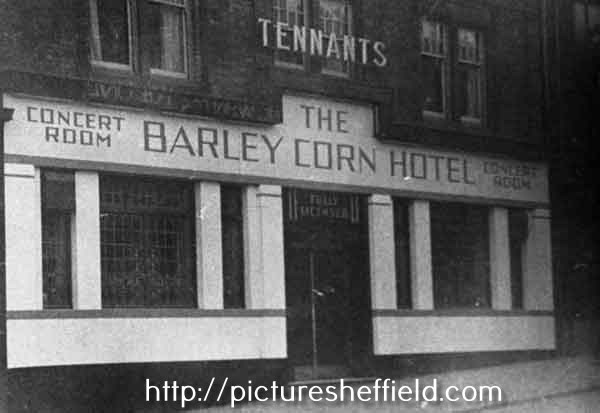

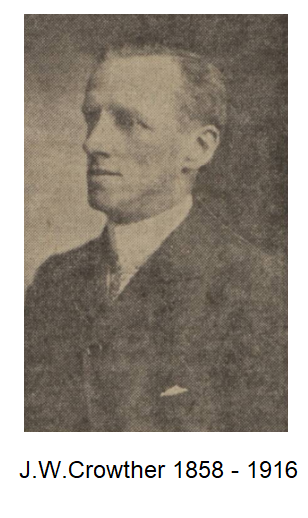

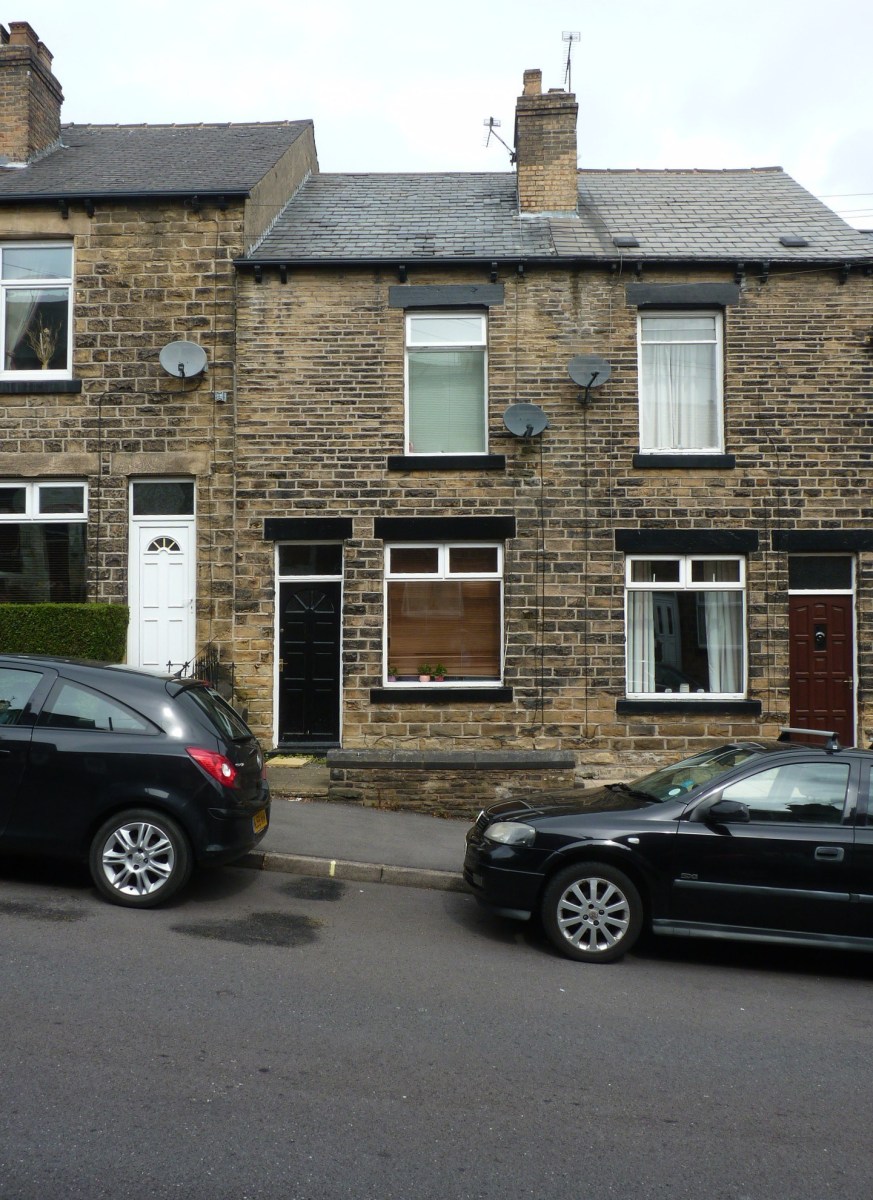
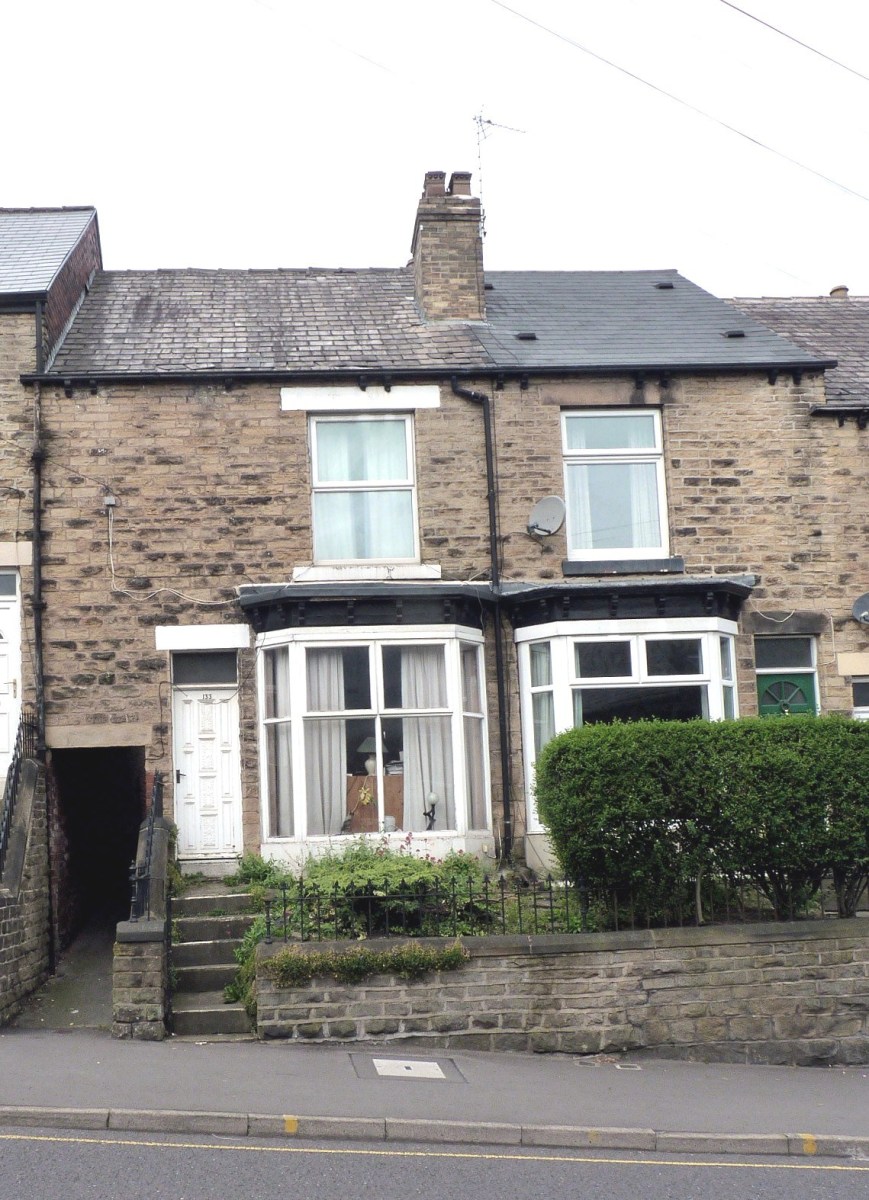
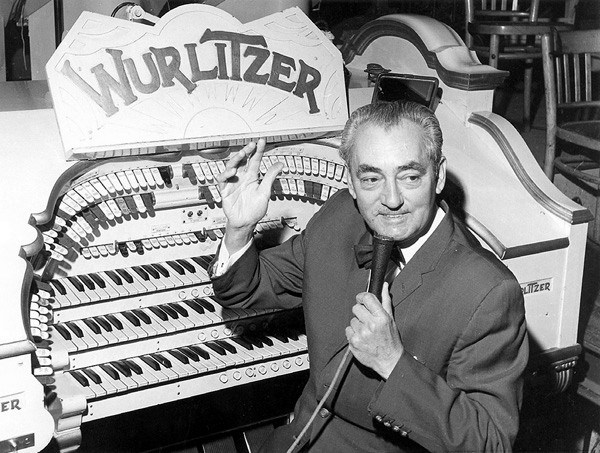

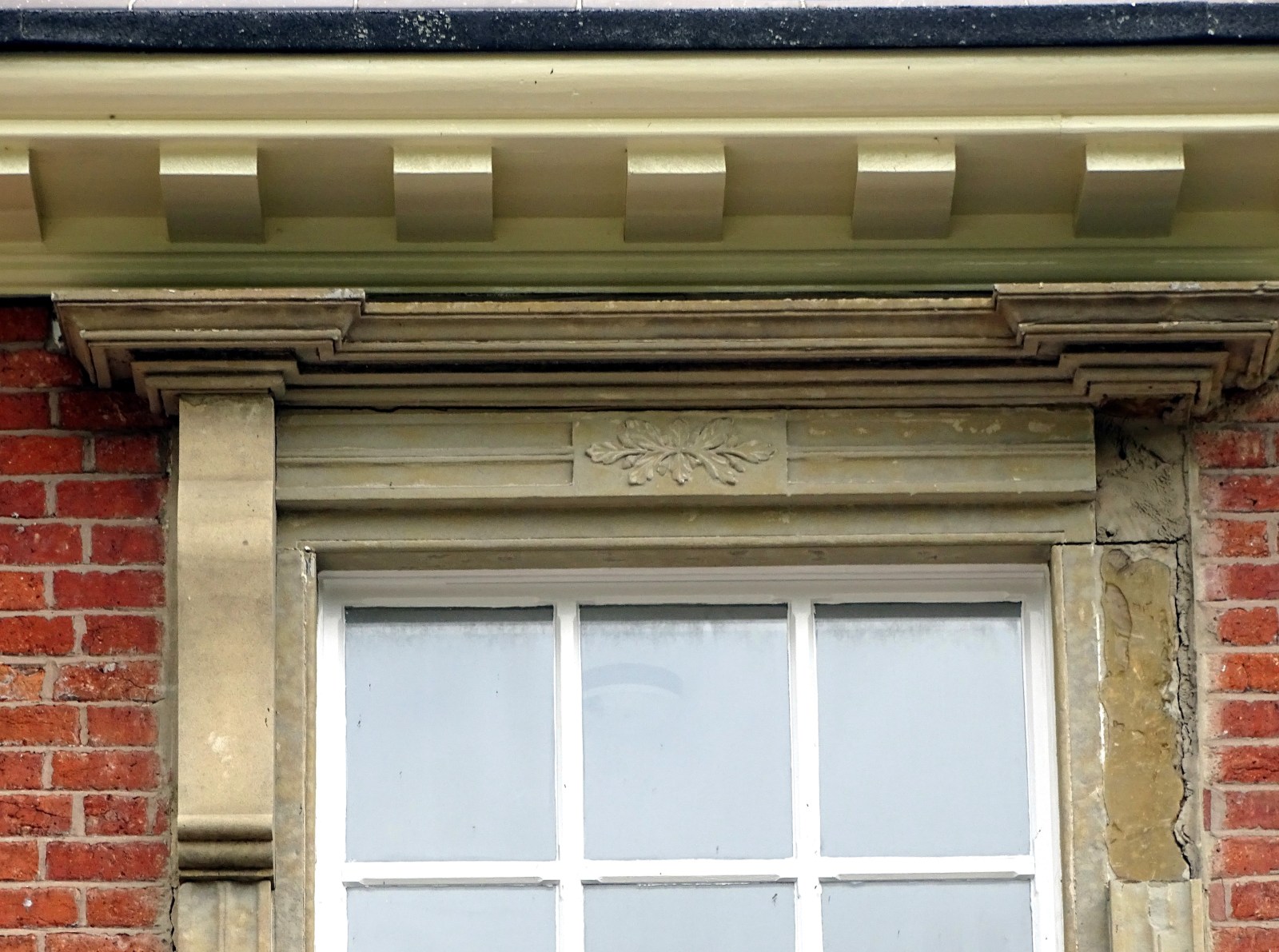
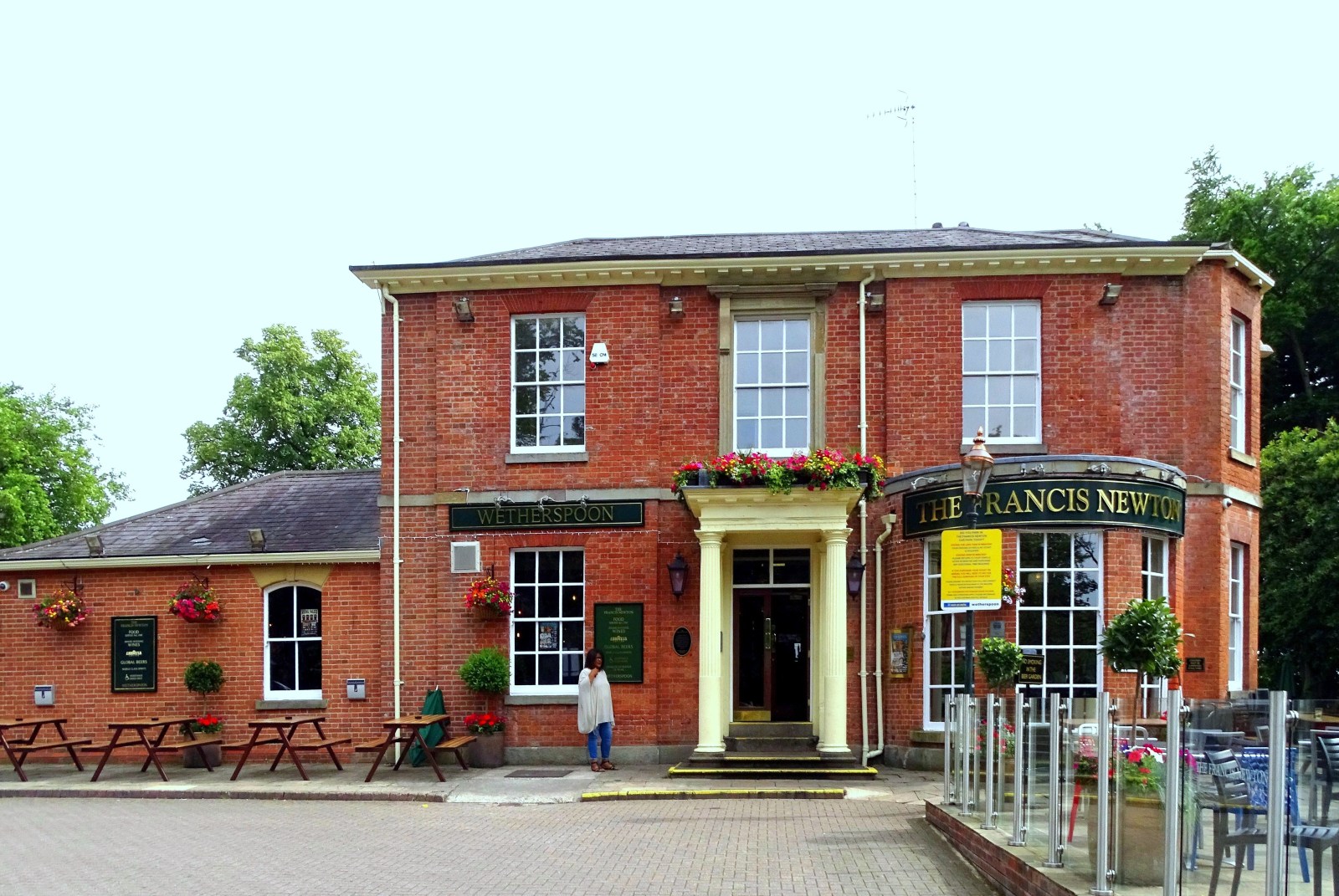
DirectorofSheffieldBankingCompany(fromaminiatureinthepossessionofFrancisNew.jpg.033744315fb8013324764041deb5f62f.jpg)














